Dan Burrill September 20, 2022 Tech
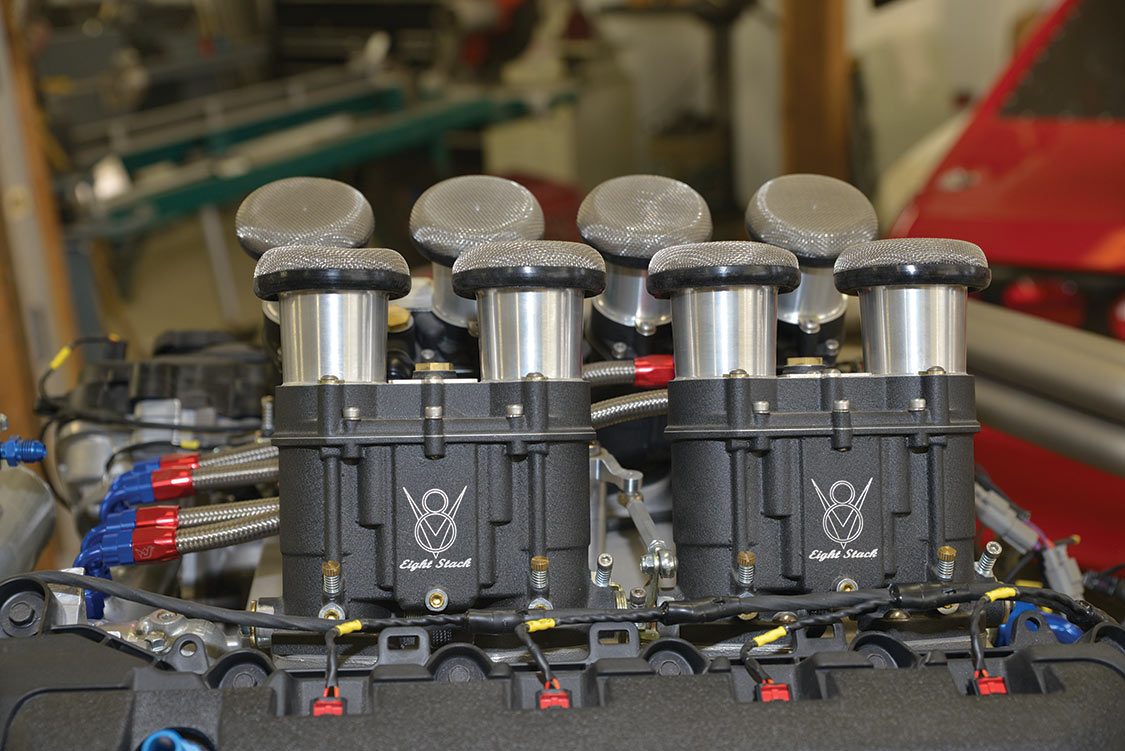
Hot rodders and car builders by their nature are visionaries. They are able to start with an idea, imagine how it is going to work and go with it, no matter how long it takes. Scott Merrell of Classic Connection is a good example. Three years ago, Merrell along with two other like-minded individuals bought two Ford GT40 Mark 4 chassis and bodies from Fran Hall at Race Car Replicas (RCR). Then, instead of the traditional 427 FE engine/transaxle combination, they decided to power these cars with the new Ford Coyote crate engine.
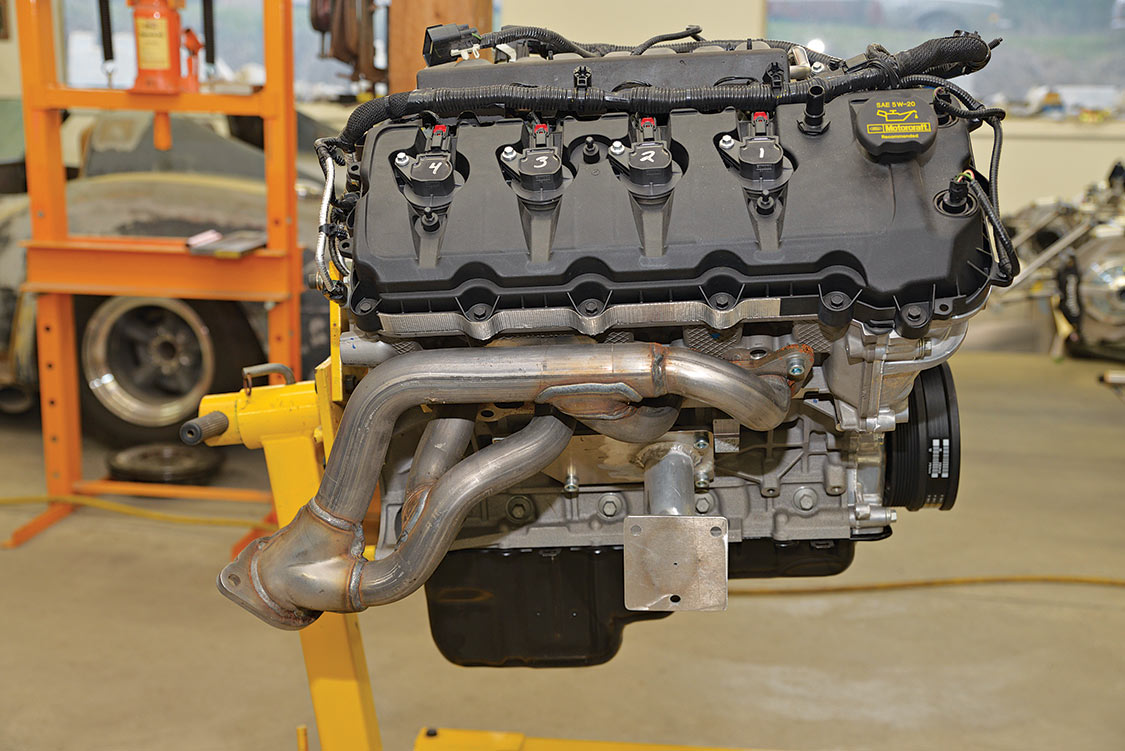
For those who are new to this, Ford Racing’s all-aluminum 5.0-liter Mustang crate engine is a modern 5.0-liter 32-valve dohc V-8 that uses advanced features such as Twin Independent Variable Camshaft Timing (Ti-VCT) to deliver 420 bhp at 6500 rpm and 390 ft.-lb.-plus of torque at 4250 rpm (with premium fuel). The lightweight aluminum cylinder block features cross-bolted main bearing caps and thick main bearing bulkheads for bottom-end strength. Optimized oil drainback and windage control improves high-rpm performance. The headers that come with the engine are designed for any late model Mustang, or an early model Mustang that has chassis modifications, or early street rods or pickups. These headers can be used by hooking an exhaust system to them, and they work very well.
Now comes the rub. Merrell and his crew want to use the sexy, exotic, 8-Stack fuel injection system. It puts out more power than the stock fuel-injection unit, and it has the retro look of the 1960s. The only problem was that no one made the intake manifold, or the wiring harnesses or the computer for that matter, to make it all work.
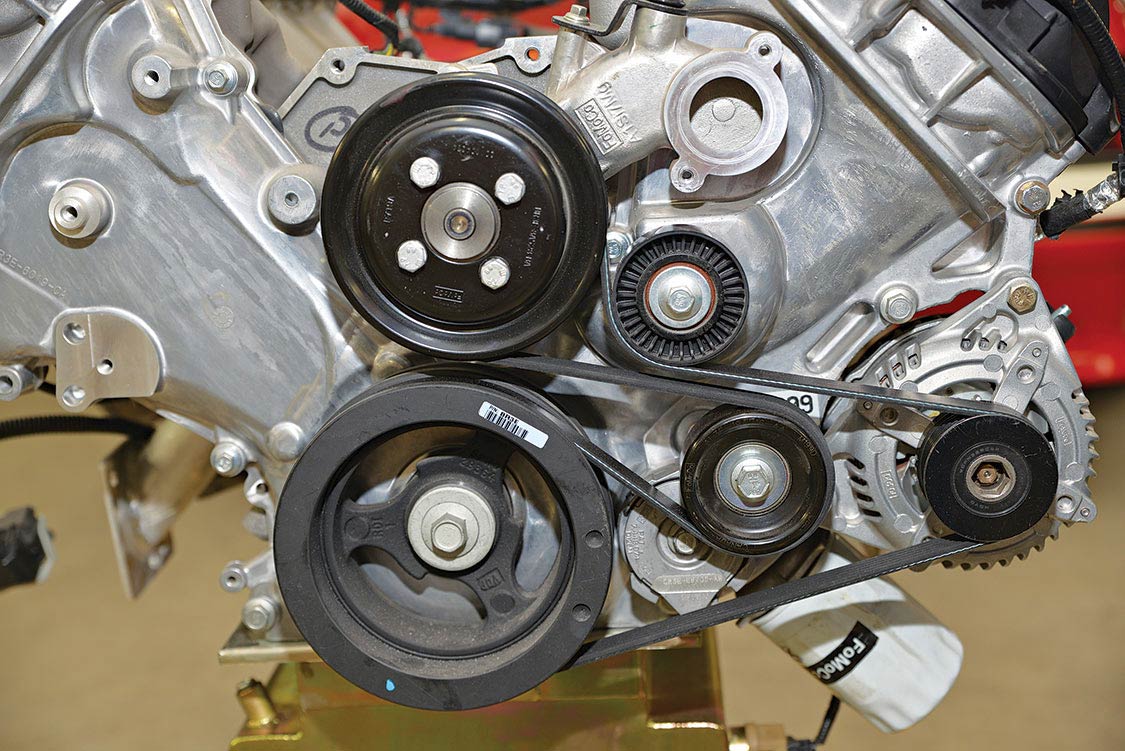
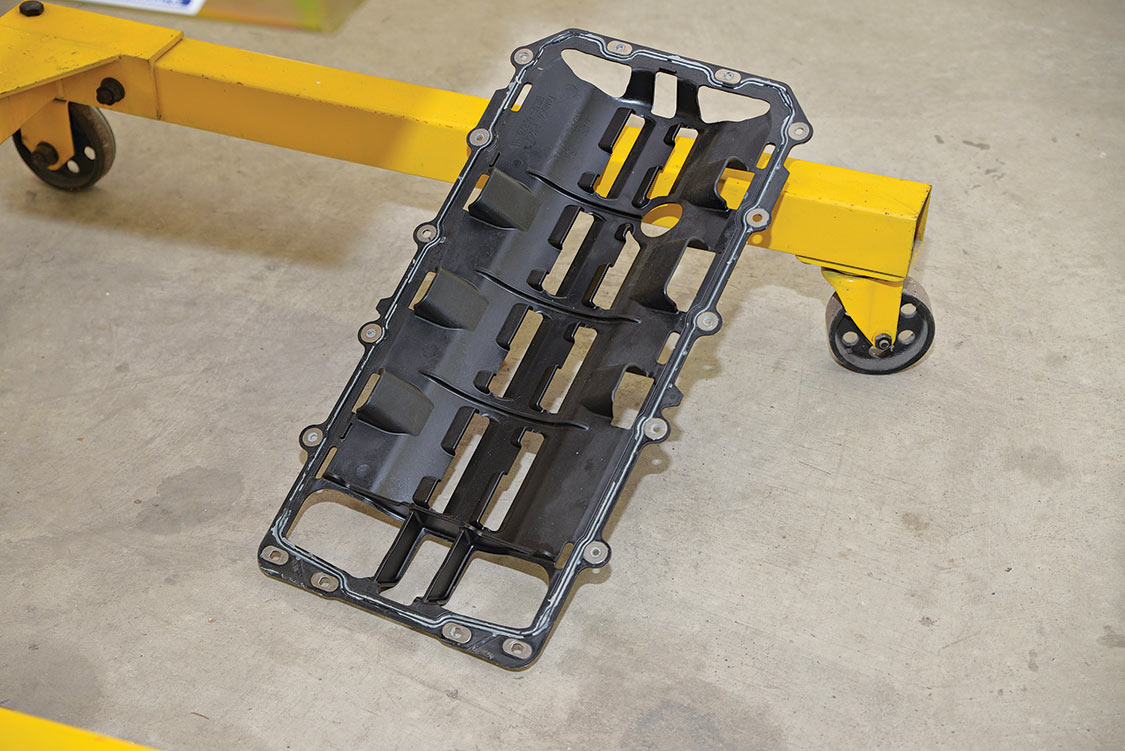
“Well, I approached Bob Hockenberry, who at that time owned 8-Stack Injection, and Dale Schaller, his number one guy, about building the mechanical system for the Ford Coyote configuration,” says Merrell. “And they both got on board with it in very short order.”
So Merrell ordered three of the Coyote crate engines from Ford. Two of the engines were shipped to his shop in Sequim, Washington, for fitting purposes in the two GT40 cars. The other engine was shipped to 8-Stack in Youngstown, Ohio, so they could do the pattern work and engineering to build the manifold and the Weber look-alike throttle bodies with the internal fuel injectors.
“The whole concept behind this was to build a 21st century technology engine, with 1965 looks, and do it with a computer system that is plug-and-play,” says Merrell. “The other important goal was that there was to be no after-install tuning.”
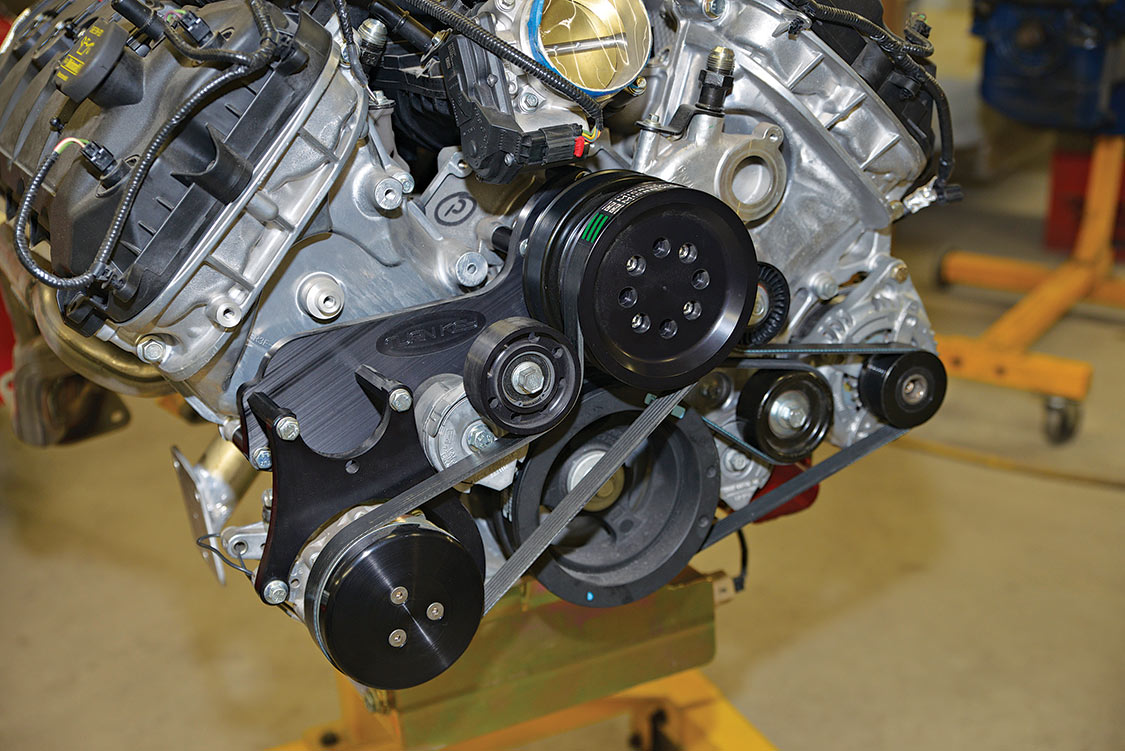
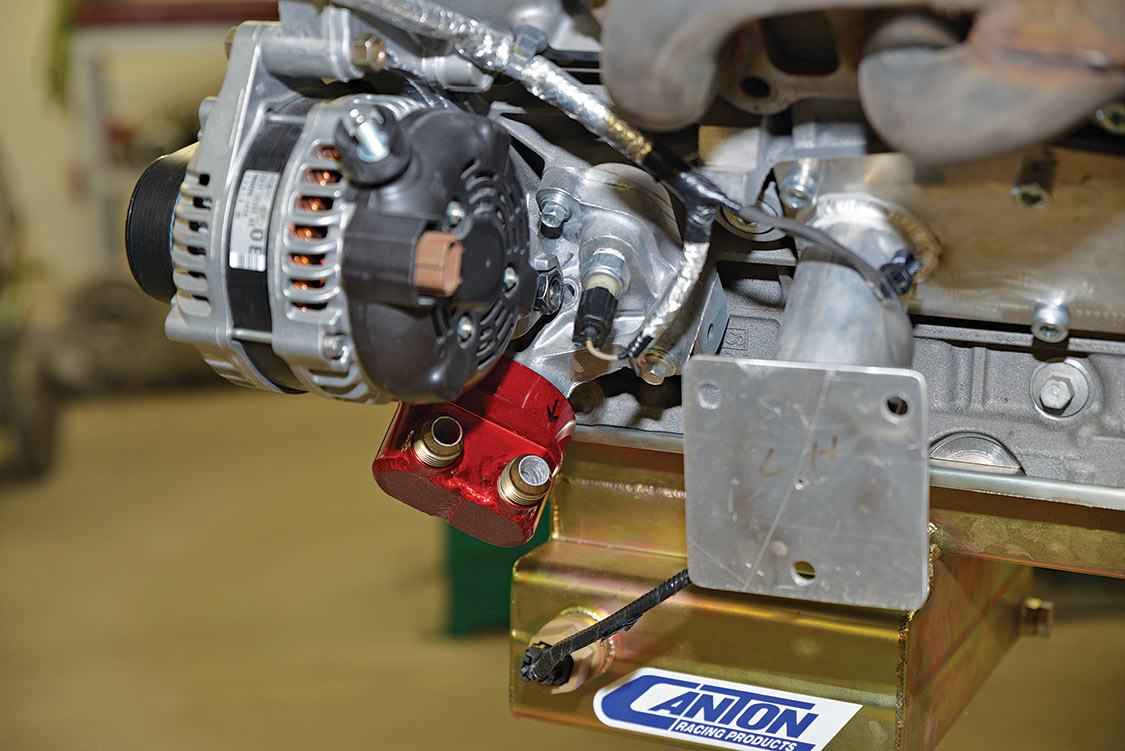
The only way this concept could be utilized was by having a consistent engine supply with a consistent base, with no internal modifications. So the Ford coyote engine at that time was the perfect choice, not only because of technology that was in it, but also because Ford Motor Company came out and said that that was going to be their performance engine for the next 10 years, and it was also going to be their production motor for their Mustangs and light trucks. The Coyote is a ready-made base engine platform.
Ford’s engine program supported Merrell’s idea to build a computer program to make it plug-and-play, with the idea that it could be used in other applications. As it turned out, it’s taken a year and a half to put the mechanical parts together on the engine. Then it’s taken another year and a half to find a quality computer manufacturer, and a quality programming company, to build the program.
“The computer and the program are the brains,” Merrell says. “We needed these two companies to satisfy my ideas as far as building a real out-of-the-box plug-and-play aftermarket fuel-injection system that looks like 1965 Weber carburetors.”
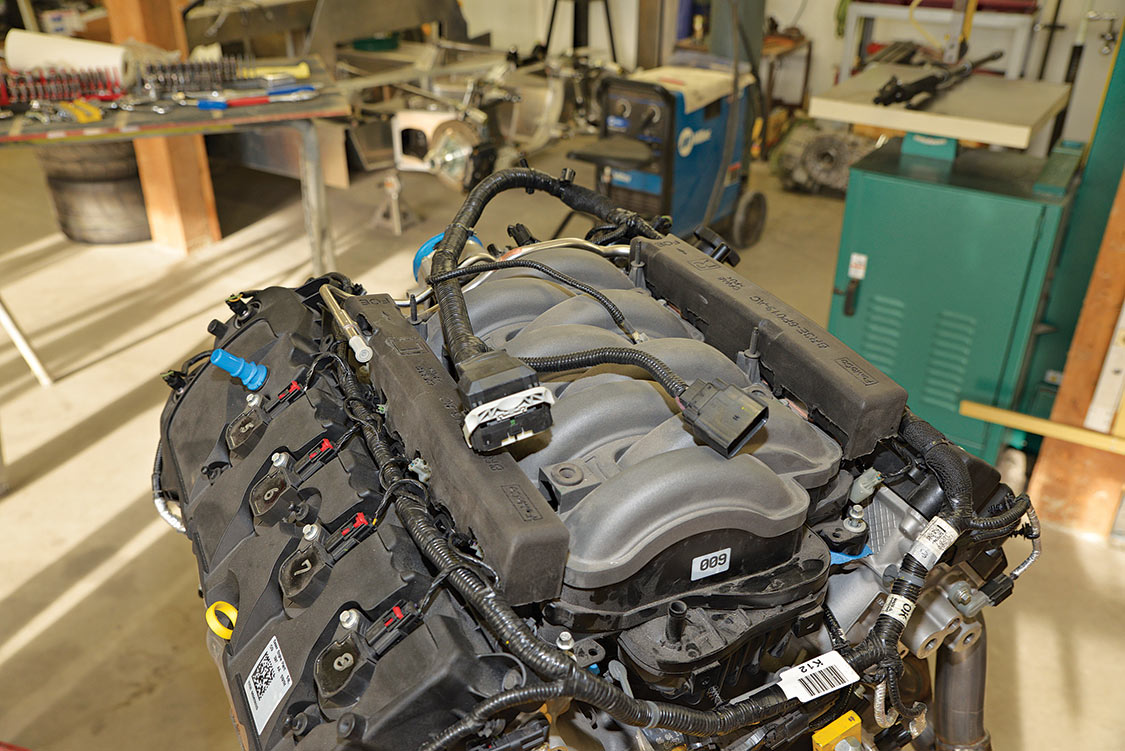
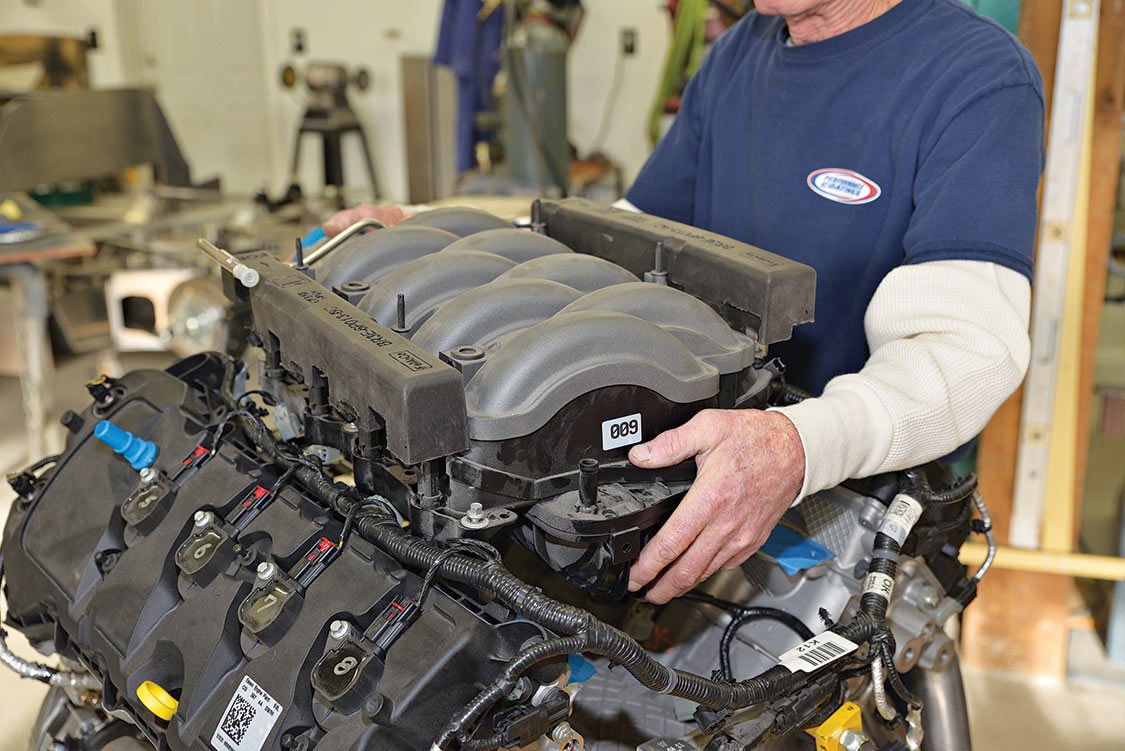
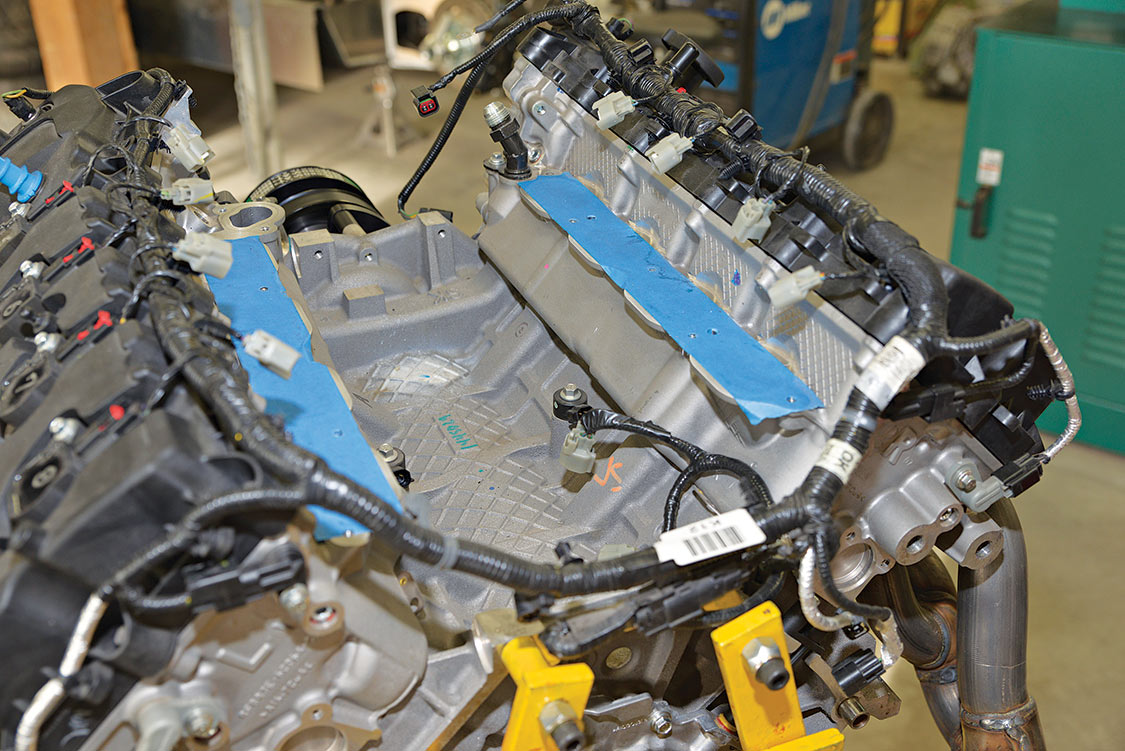
The engines being used are right out-of-the-box, 5-liter, 302-cu.-in. and weigh 400 lb. each. This is 60 lb. less than the original small-block Ford. This is the only normally aspirated engine that’s ever been designed and built that is capable of 1.5 bhp per cubic inch. That tells you how good the design is.
The next obstacle, once they got to the point of seeing a reasonable time frame for having the dyno work done and the computer program built and functioning, was they needed a test bed.
The two Mark 4 GT40s were not and are not even close to being completed. So, late last year Merrell worked out a deal with Karen Salvaggio to purchase her old Factory Five Daytona Coupe. It was a dedicated race car and had been retired when she built her new Daytona Coupe.
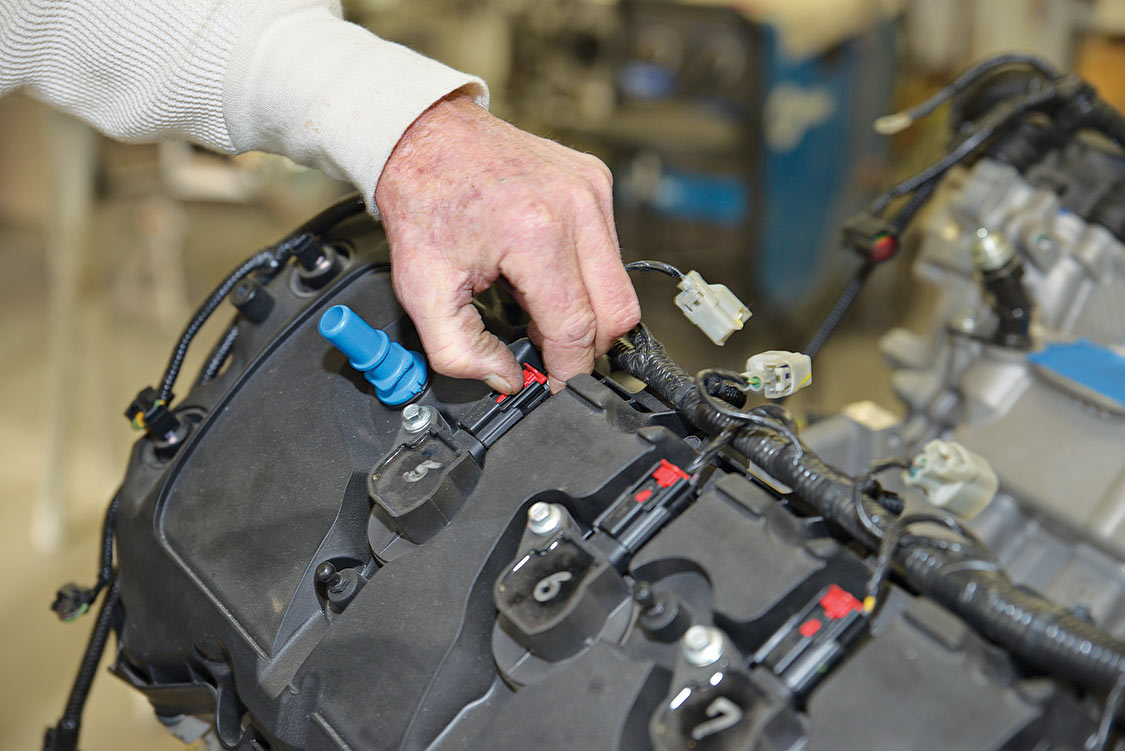
For this application, the Canton oil pan is installed on the engine. The stock Ford pan is a rear sump operation. This engine was designed for the Mustang and they had to go to the rear sump pan because of the “K” member. Most of the performance applications don’t have a “K” member so they use front sump pans rather than rear sump pans. It is a better system because the oil is that much closer to the oil pump, which means less chance of having a cavitation problem. Not every vehicle will accept the front sump pan and, if that’s the case, we use the stock pan. Also the Canton oil pan is used with this engine because it has a deeper front sump.
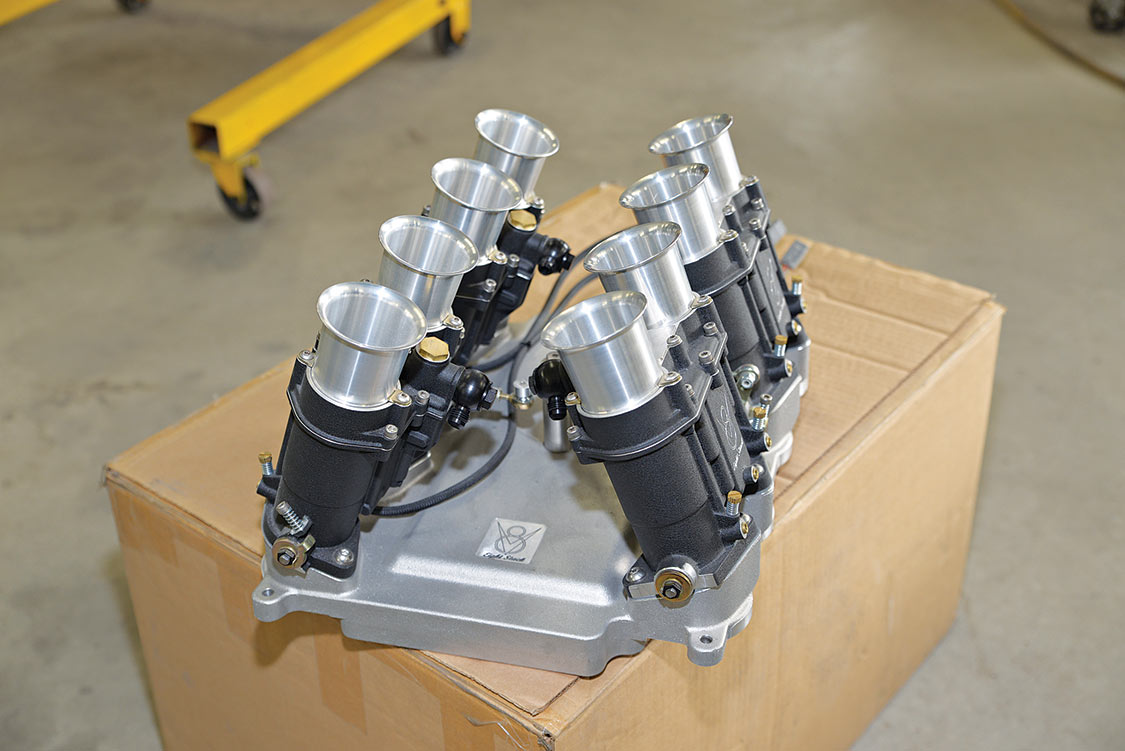
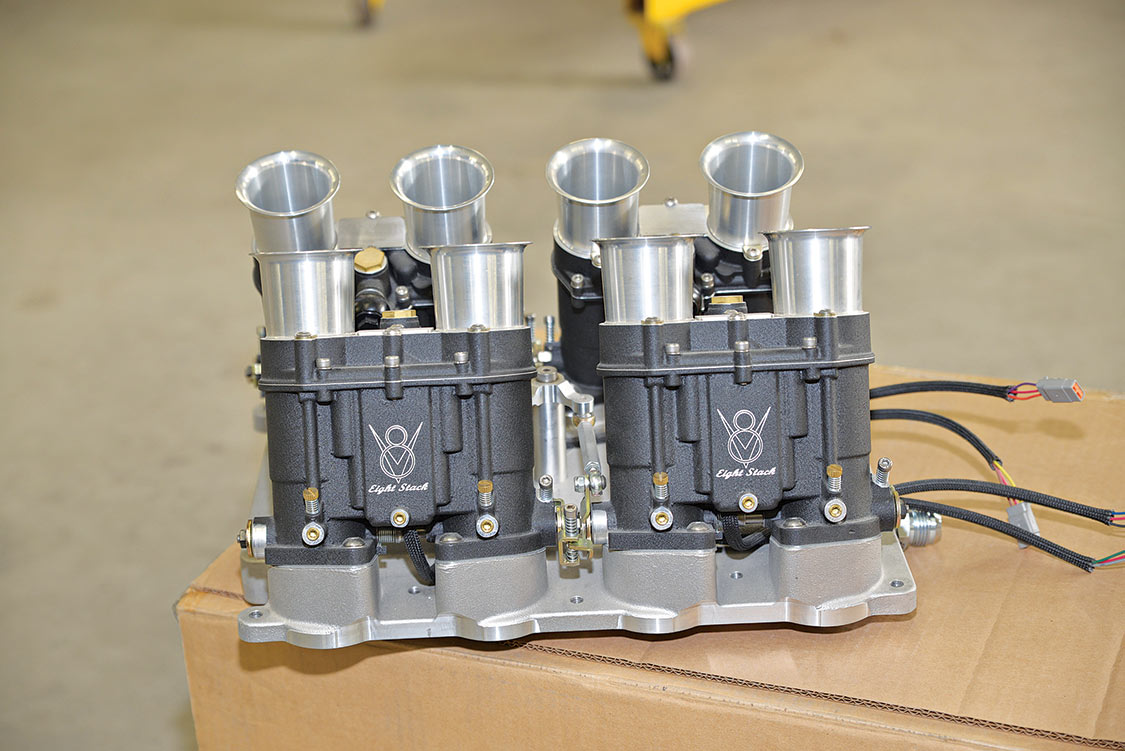
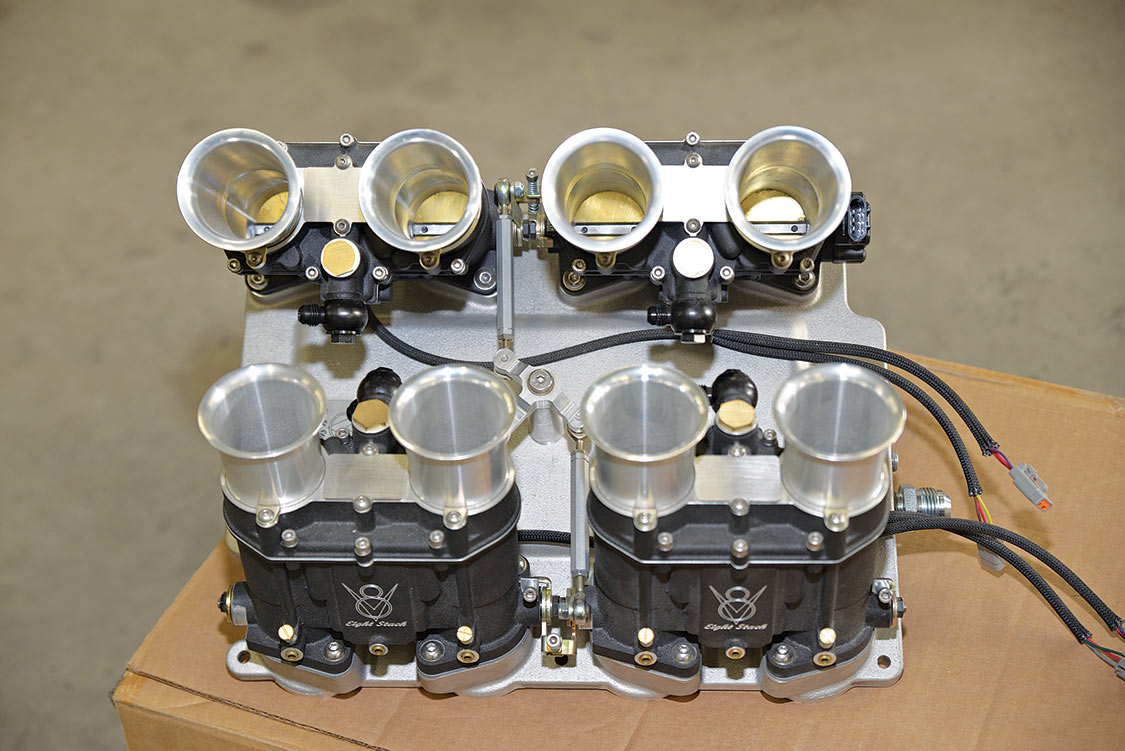
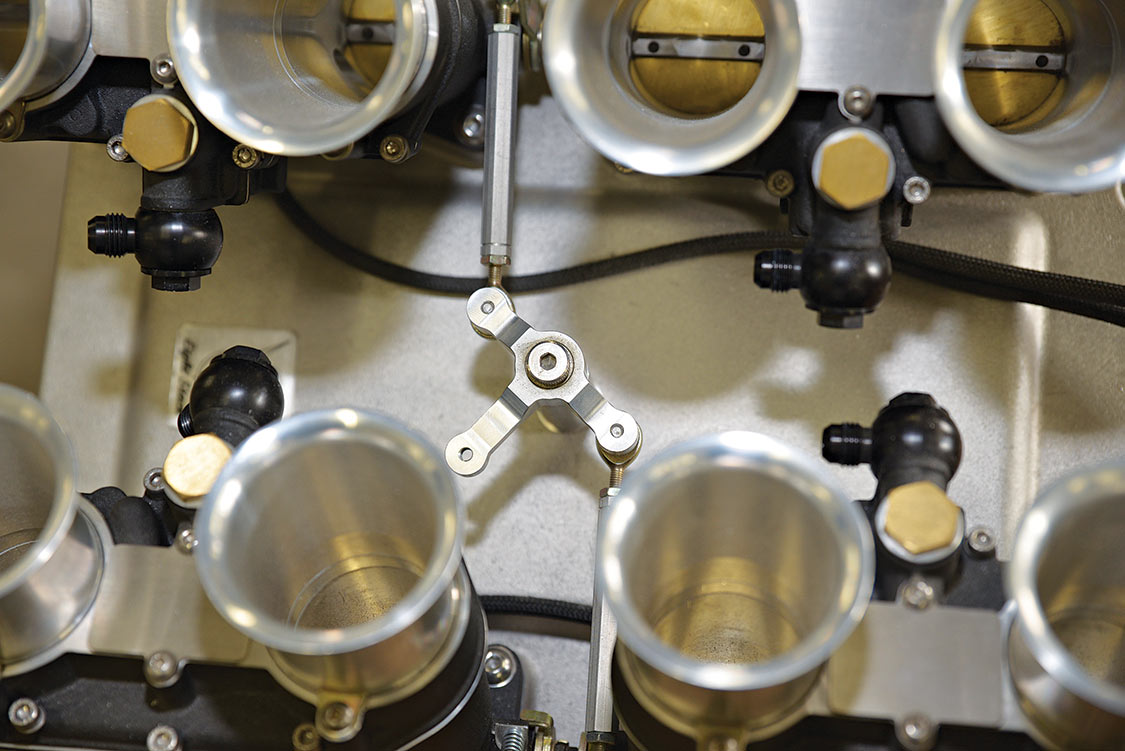
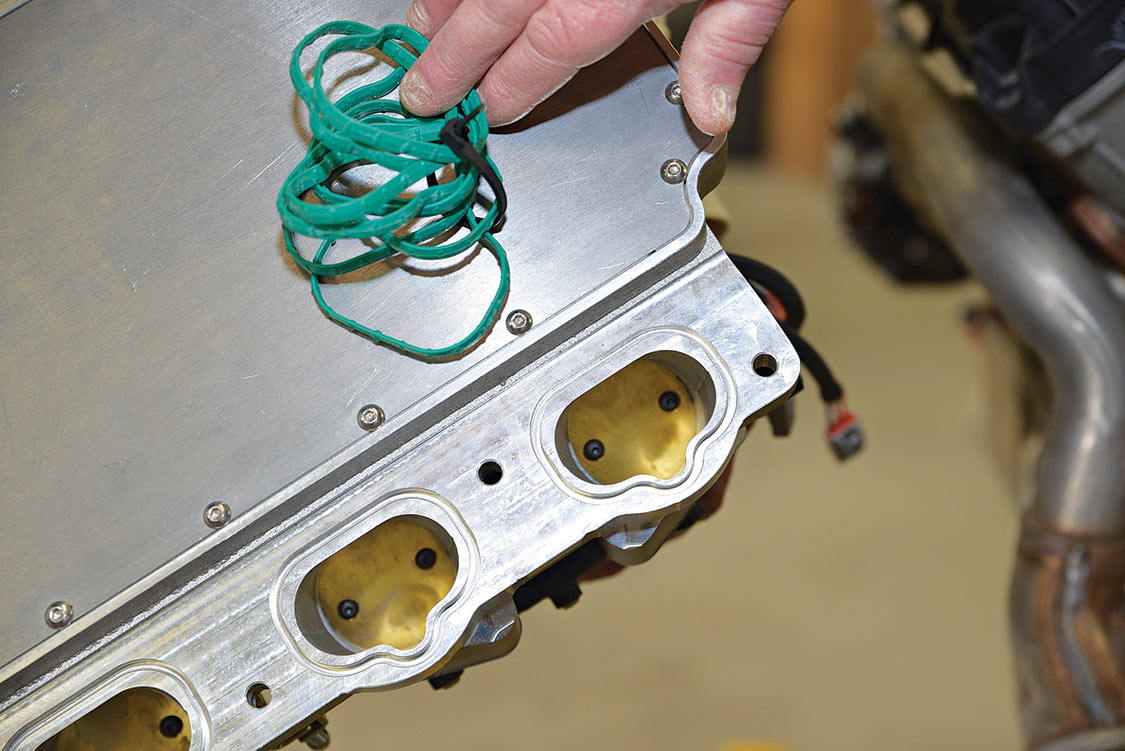
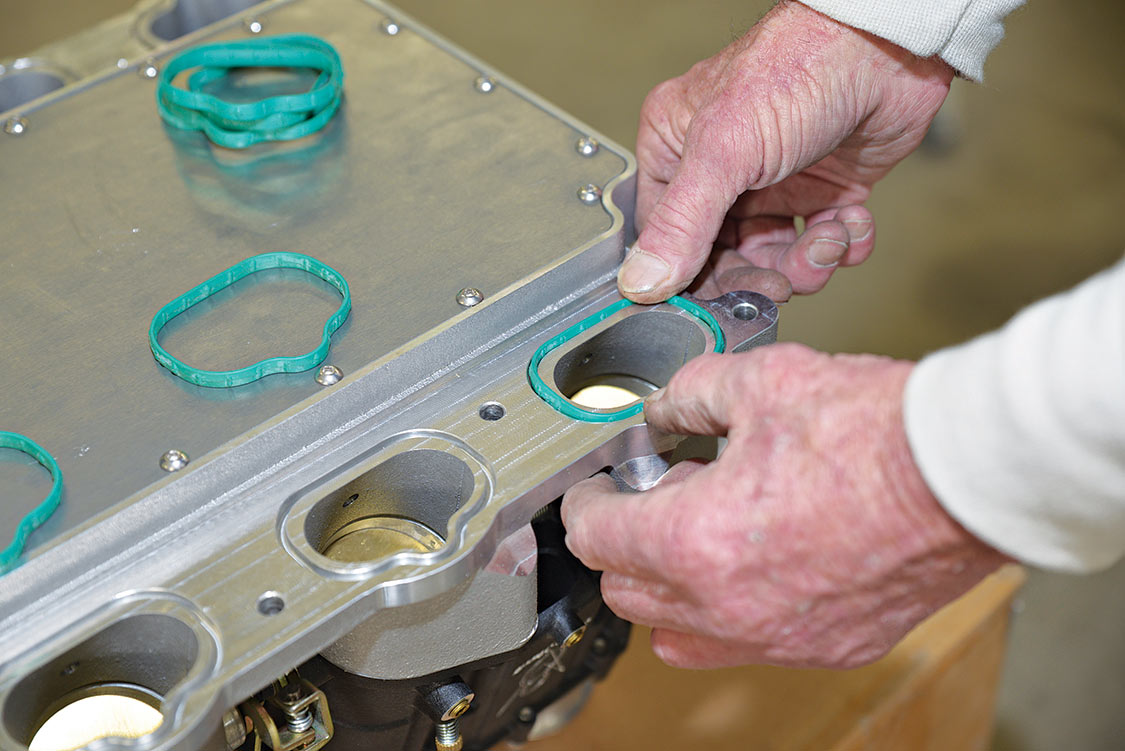
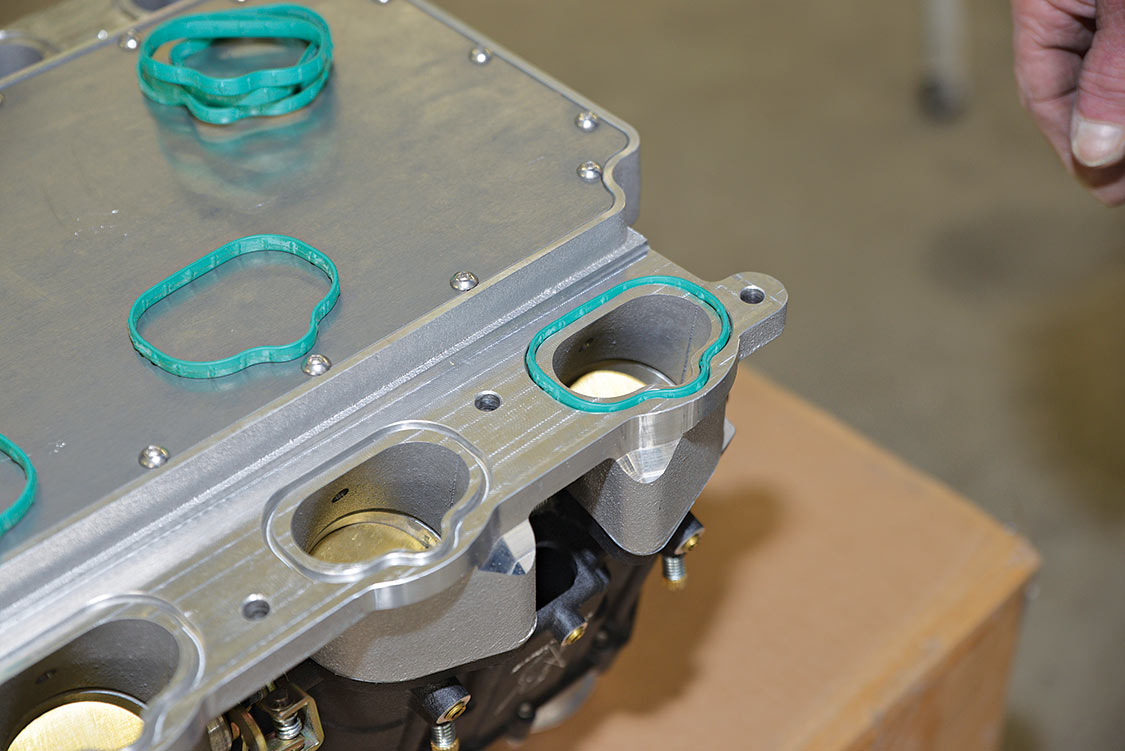
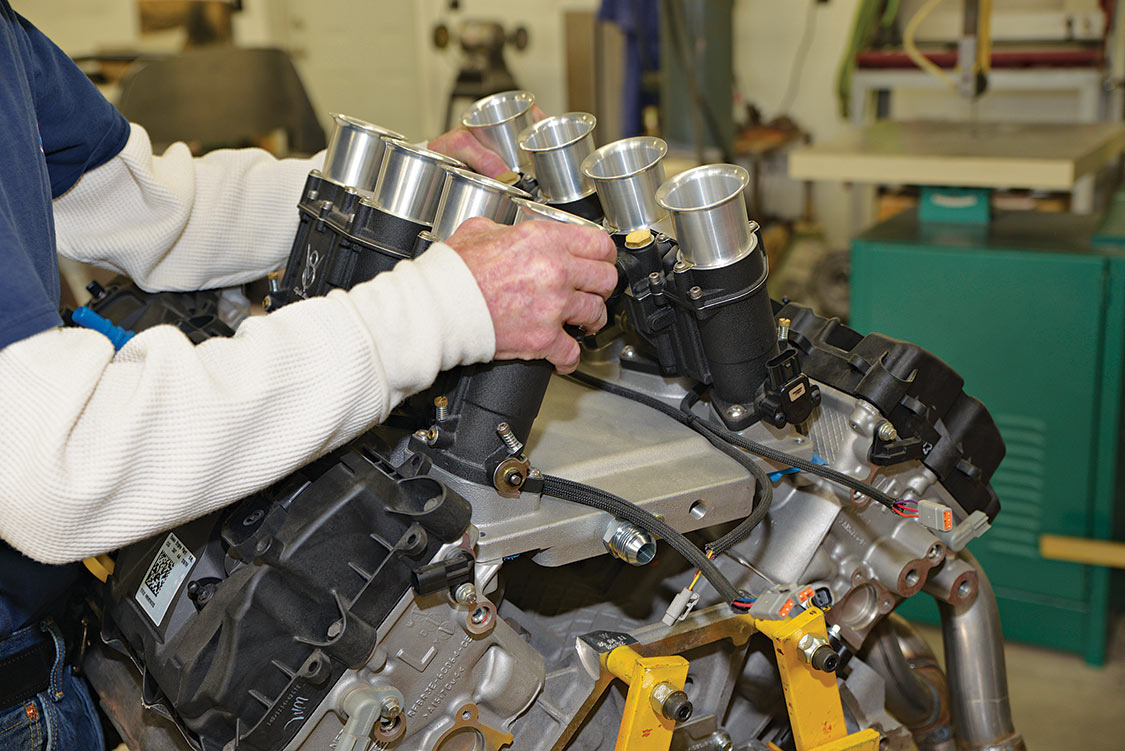
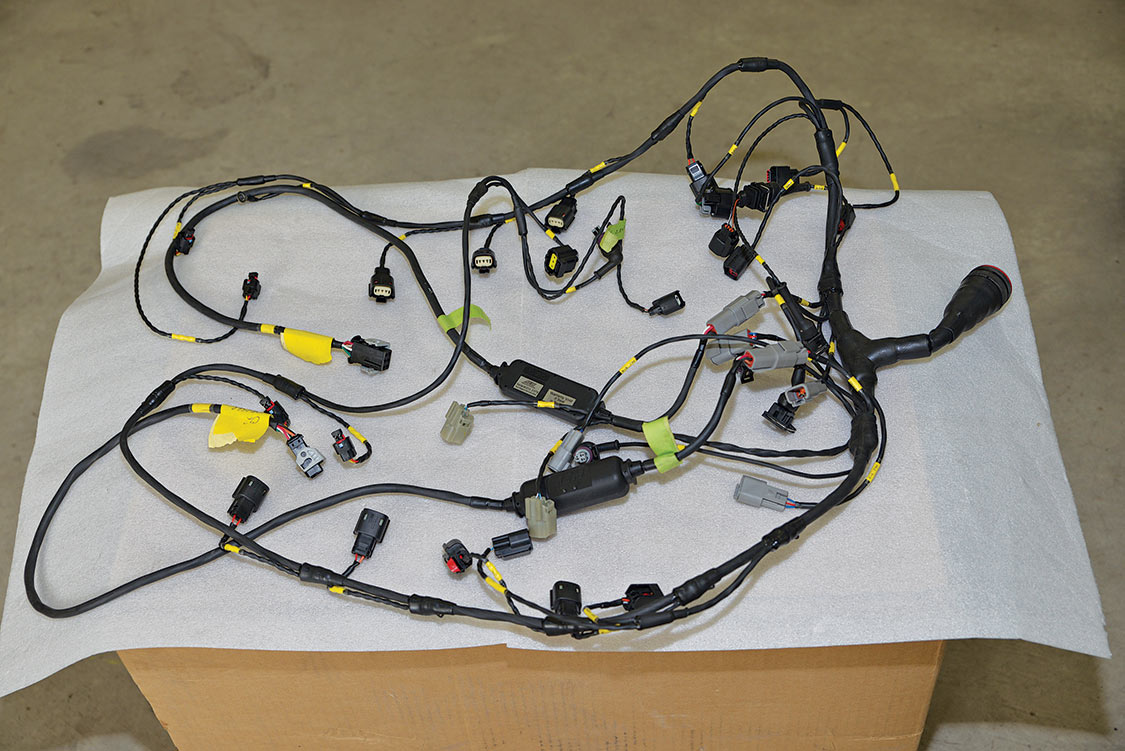
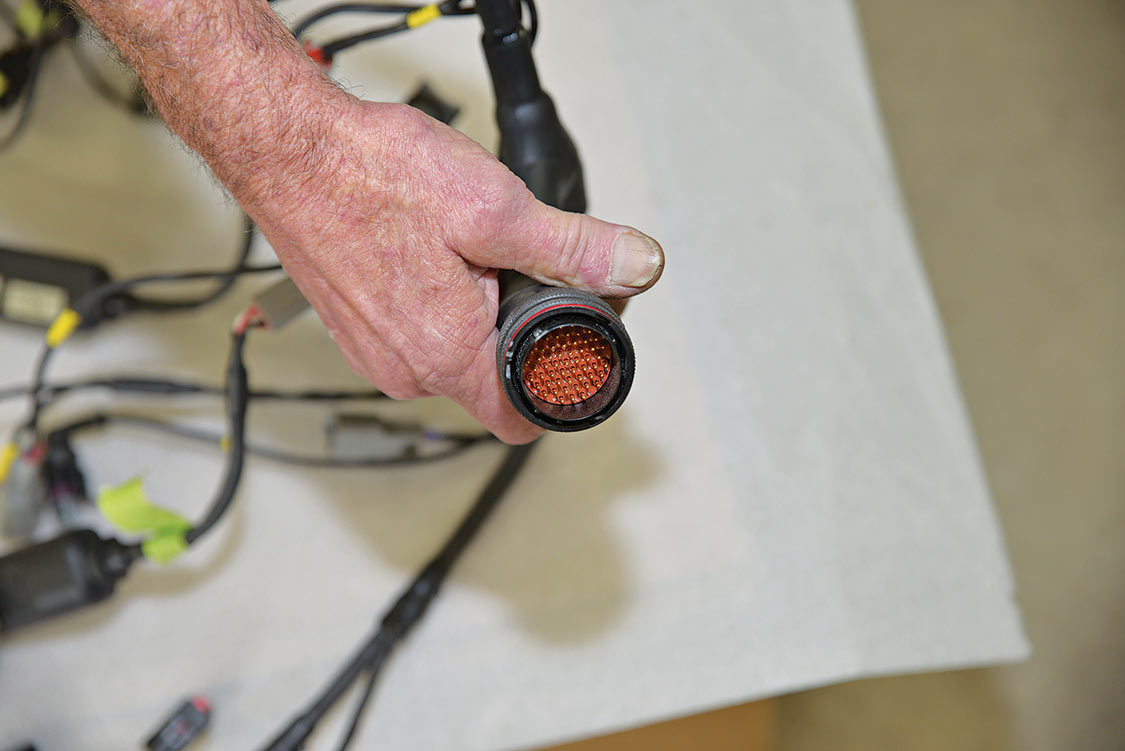
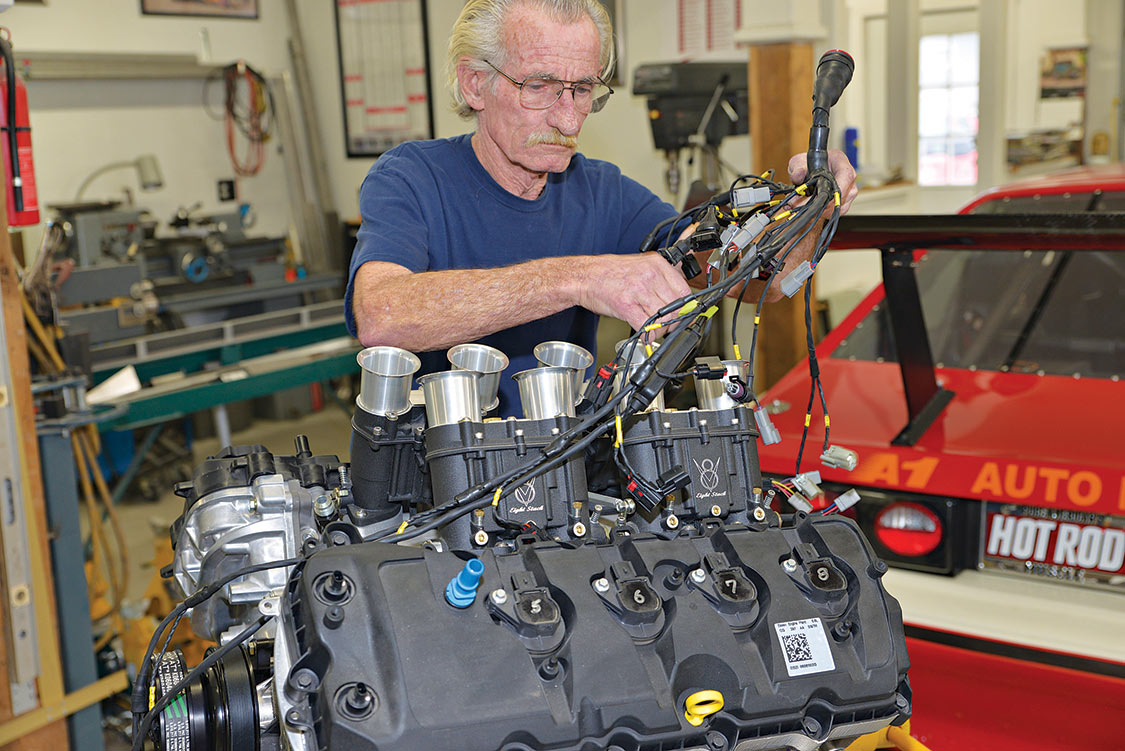
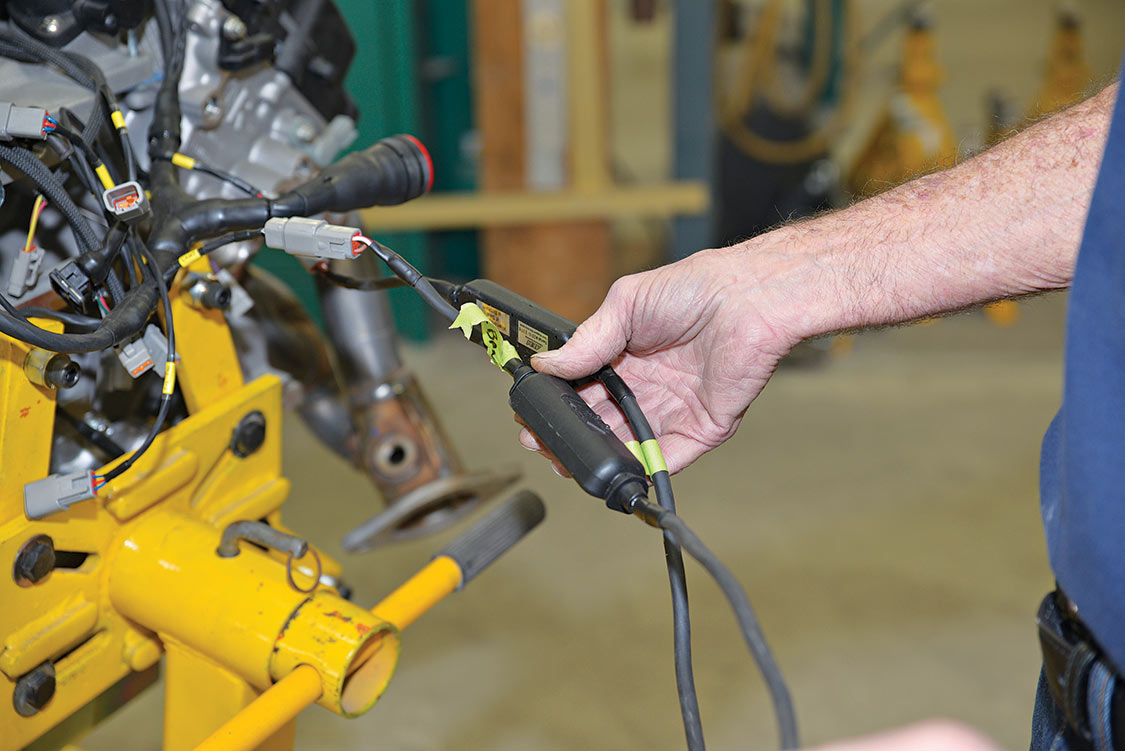
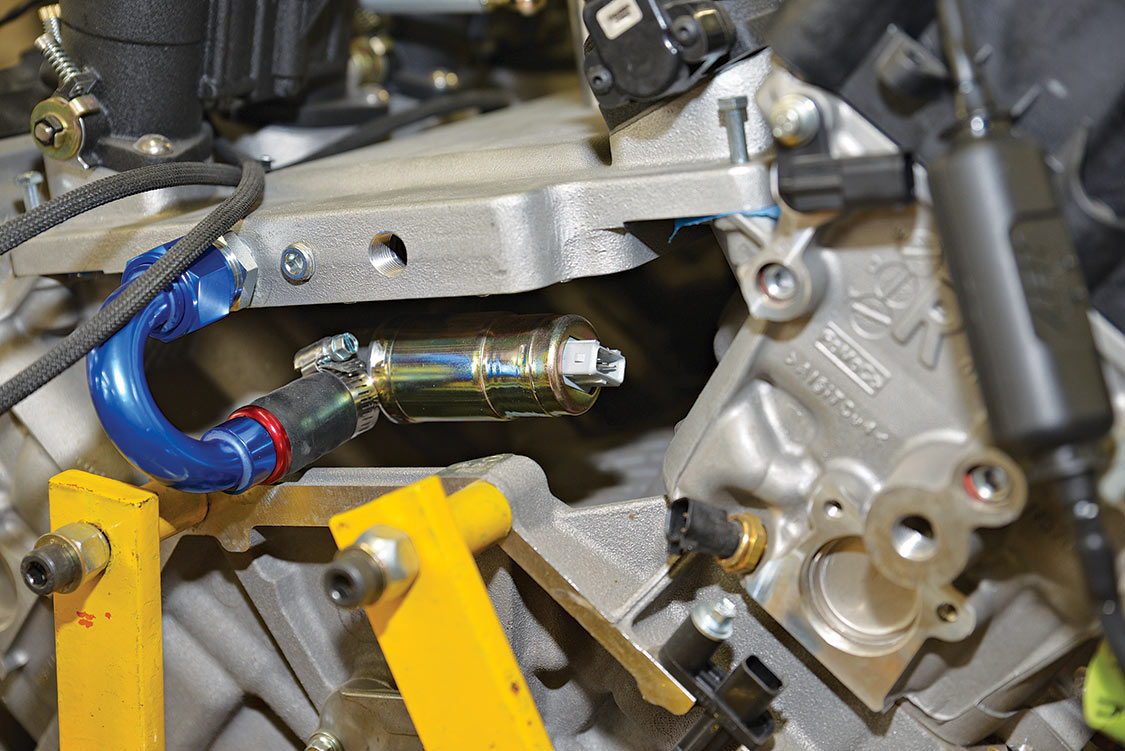
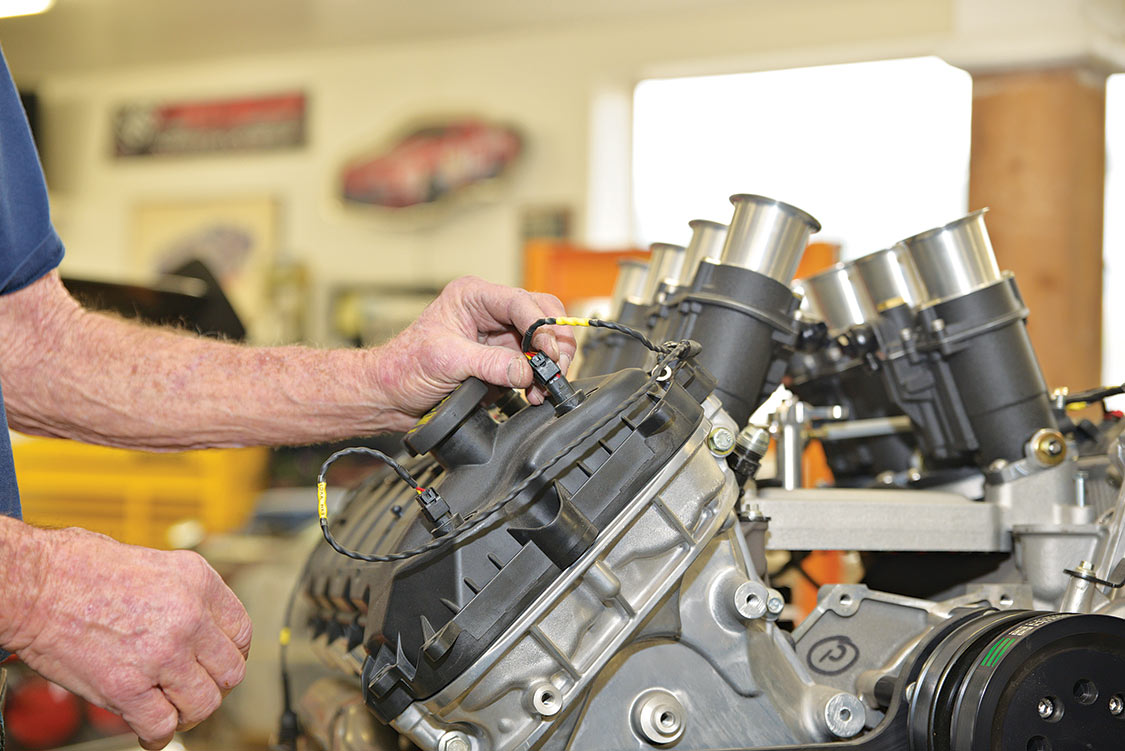
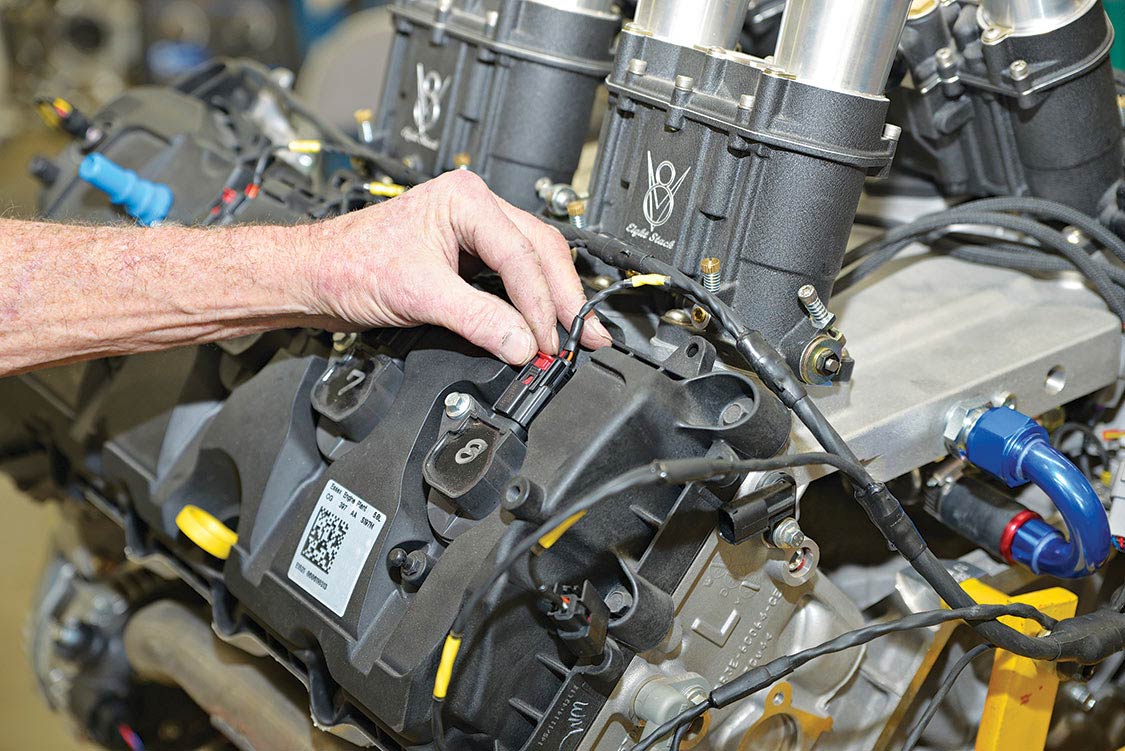
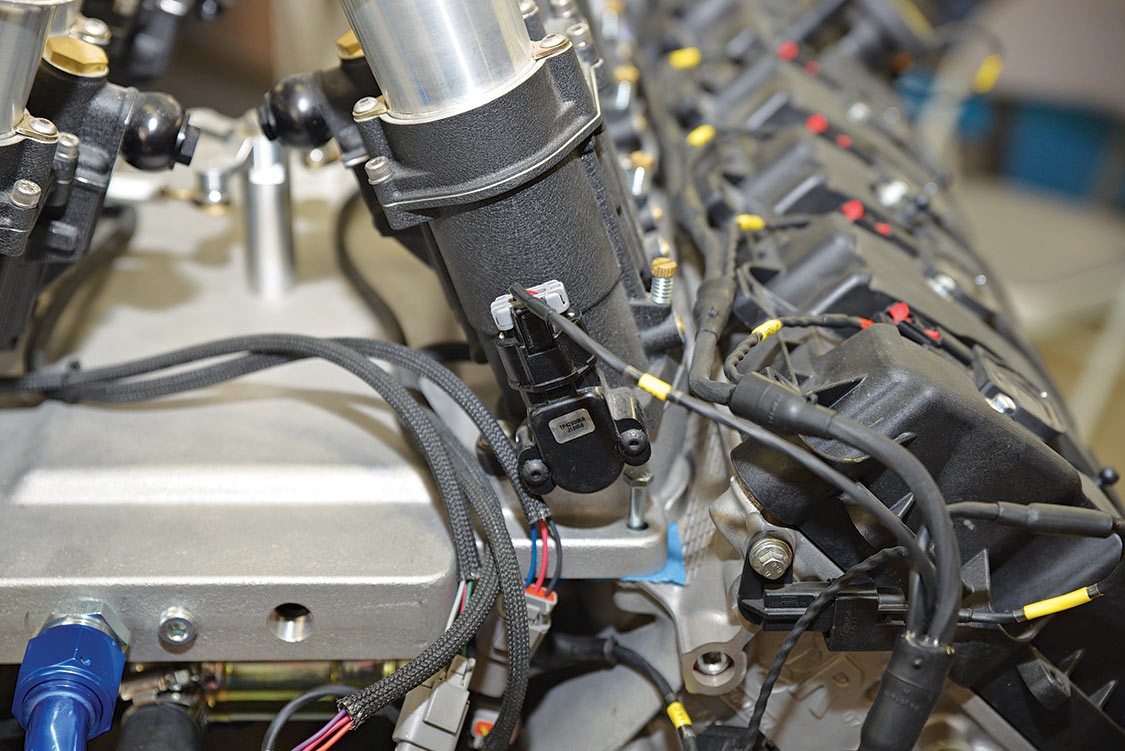
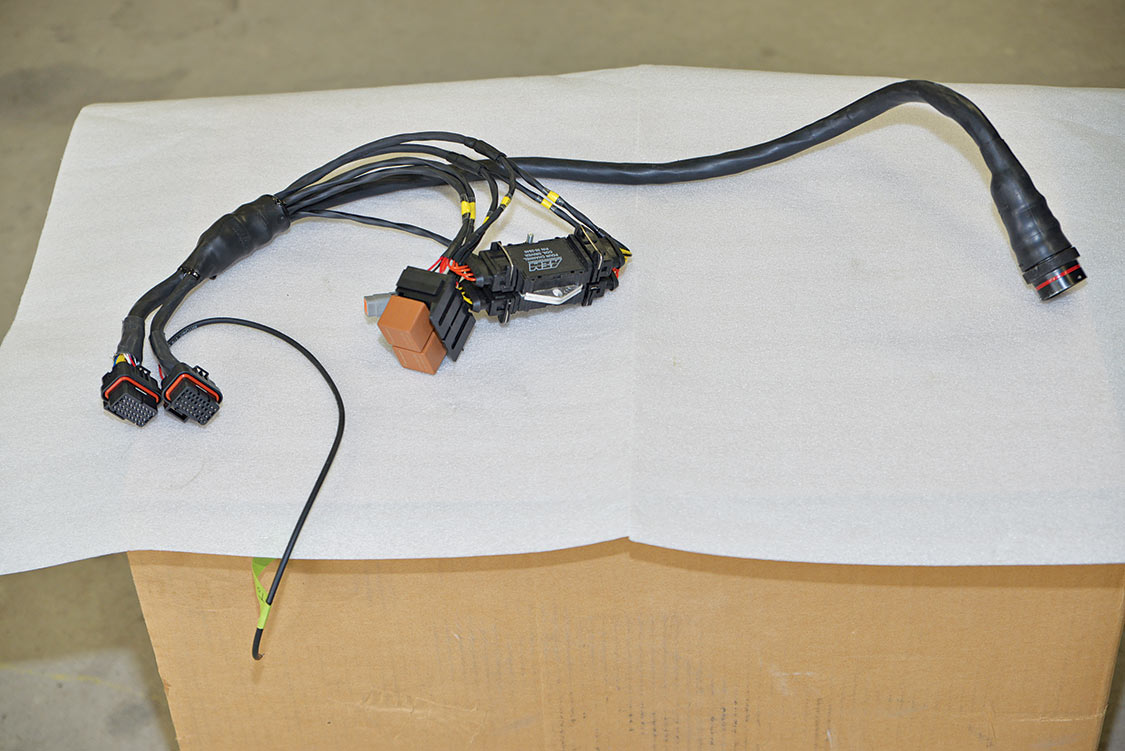
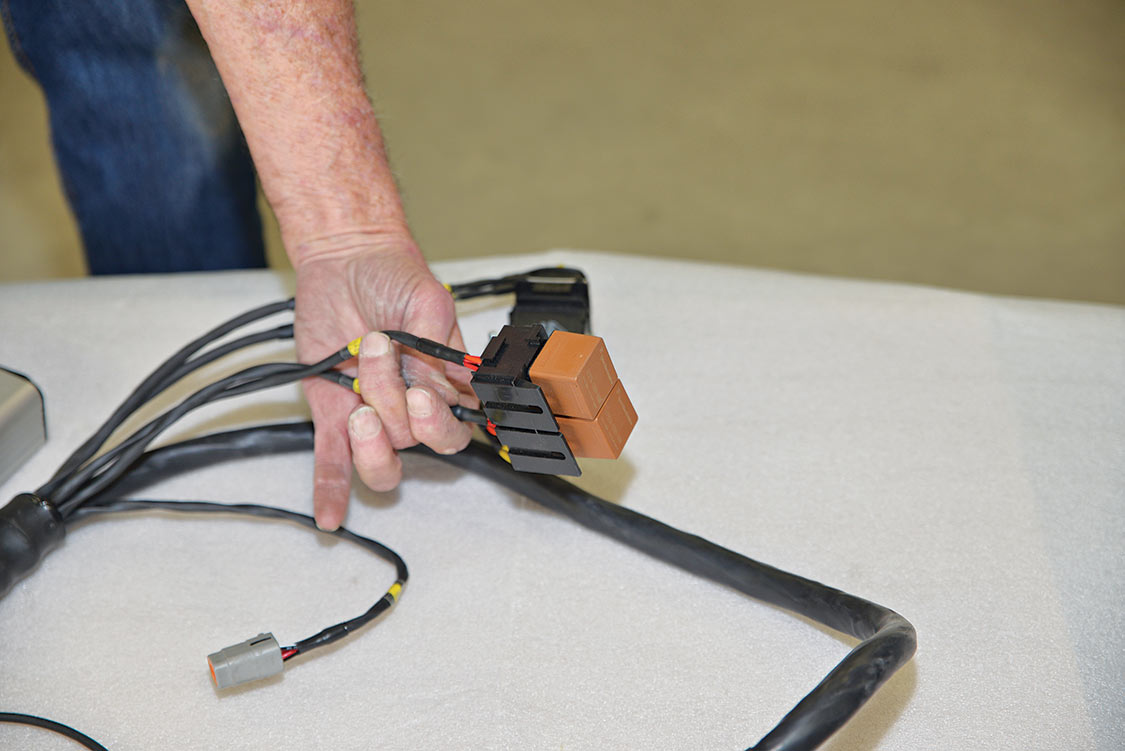
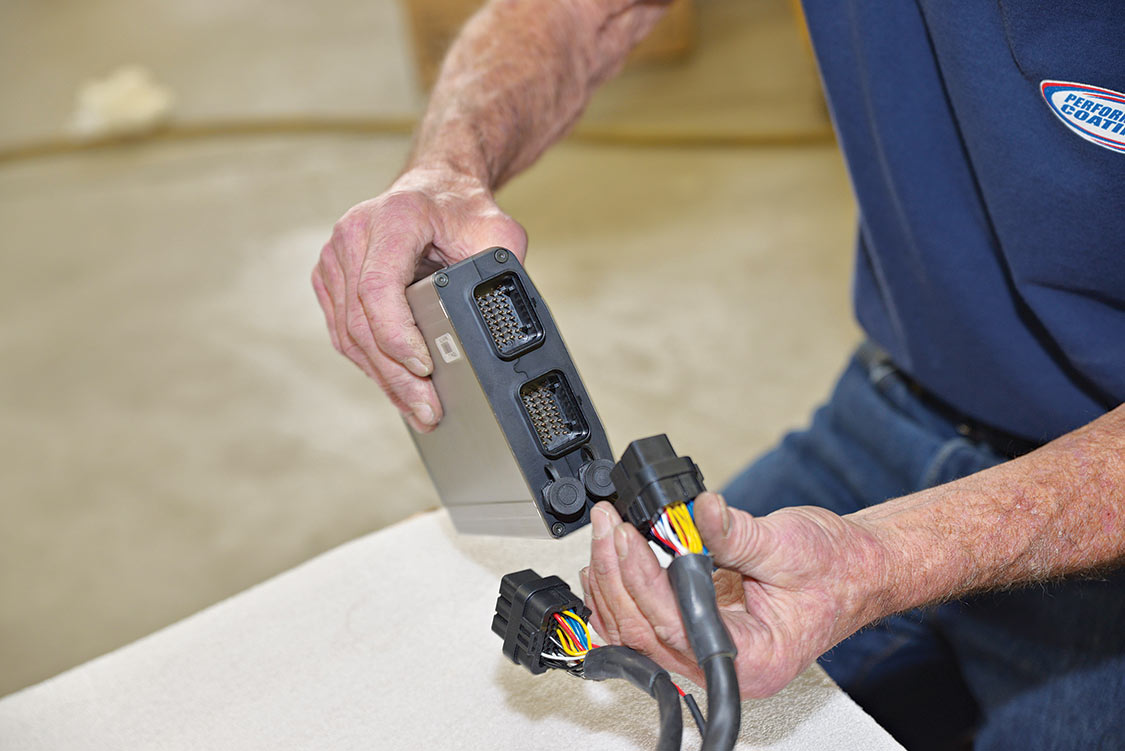
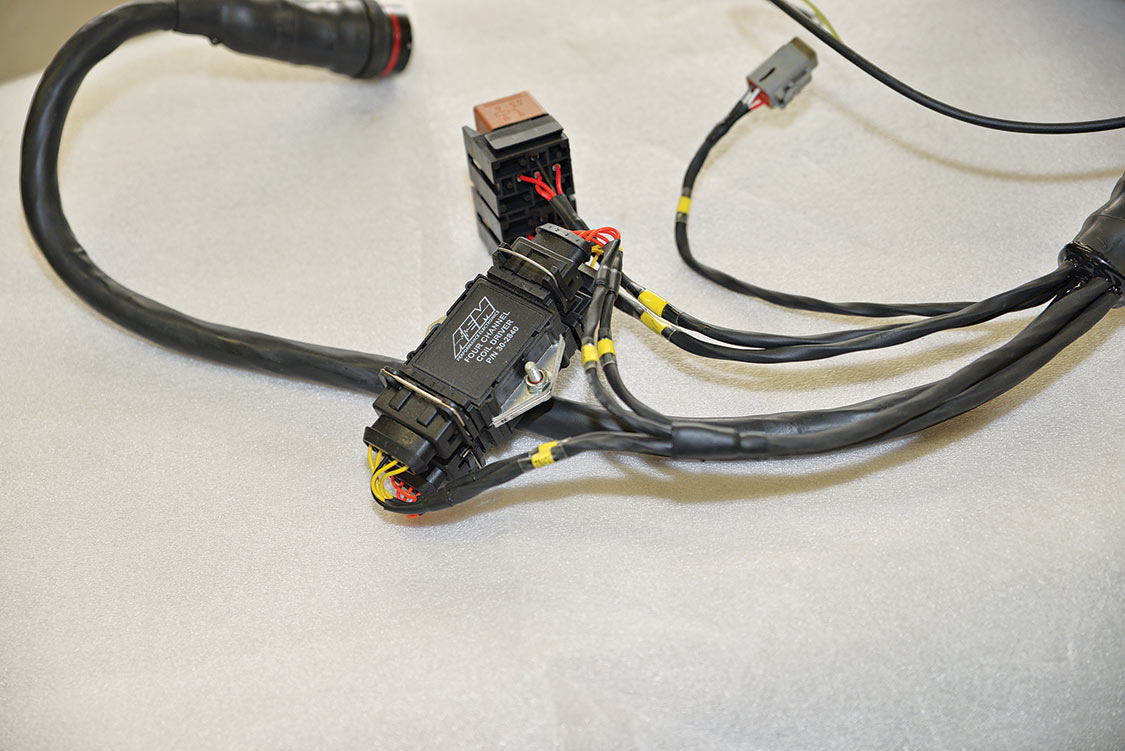
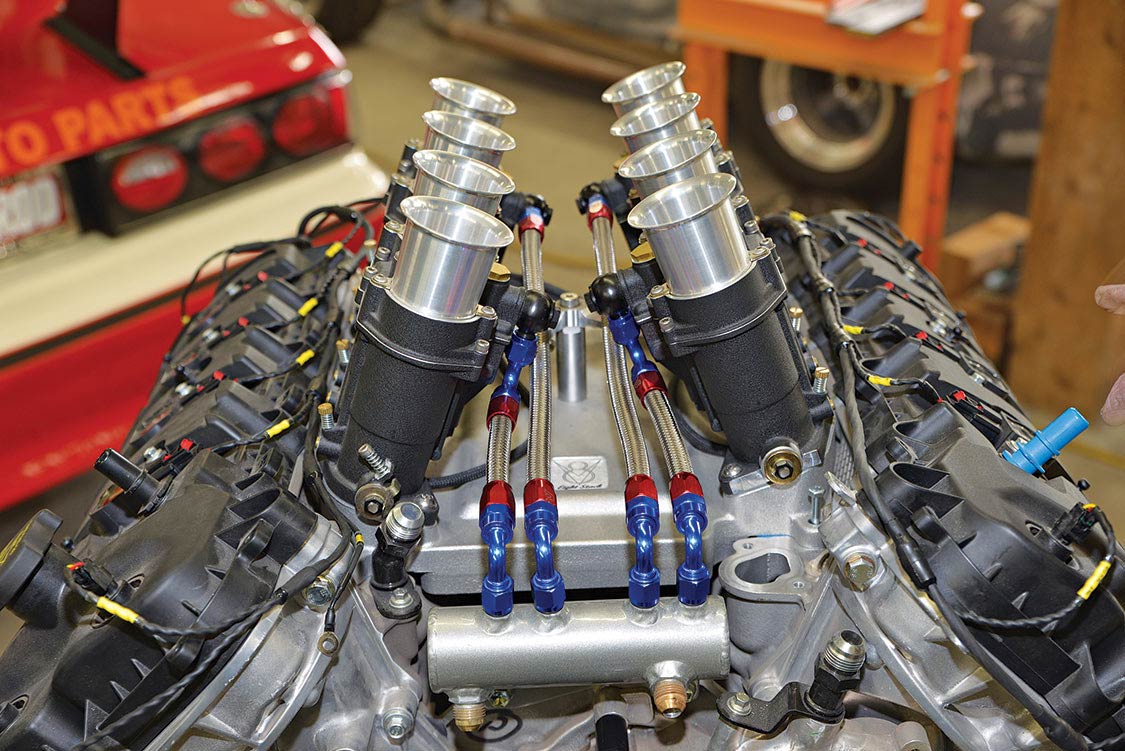
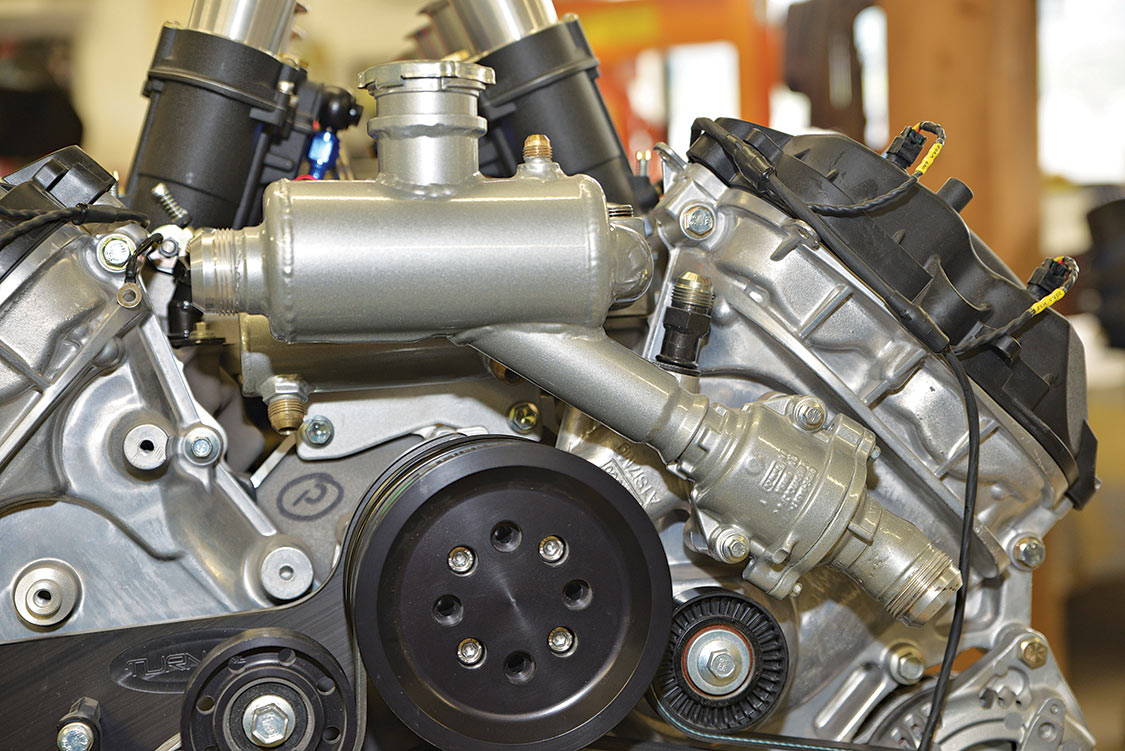
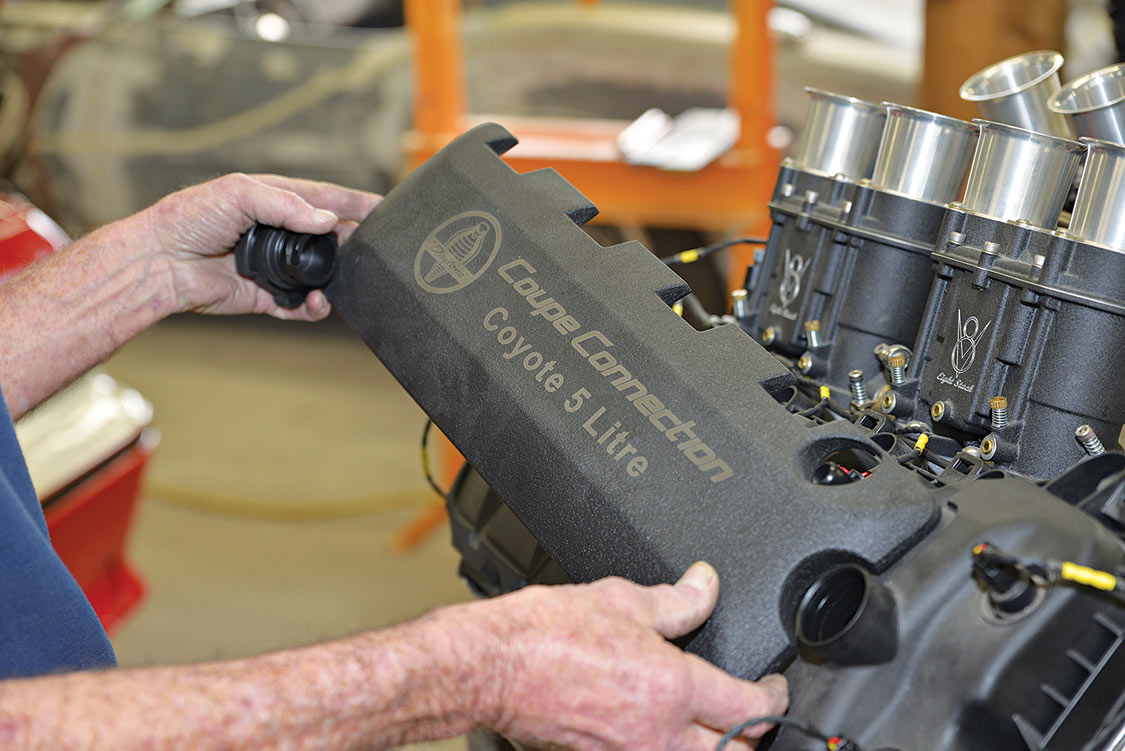
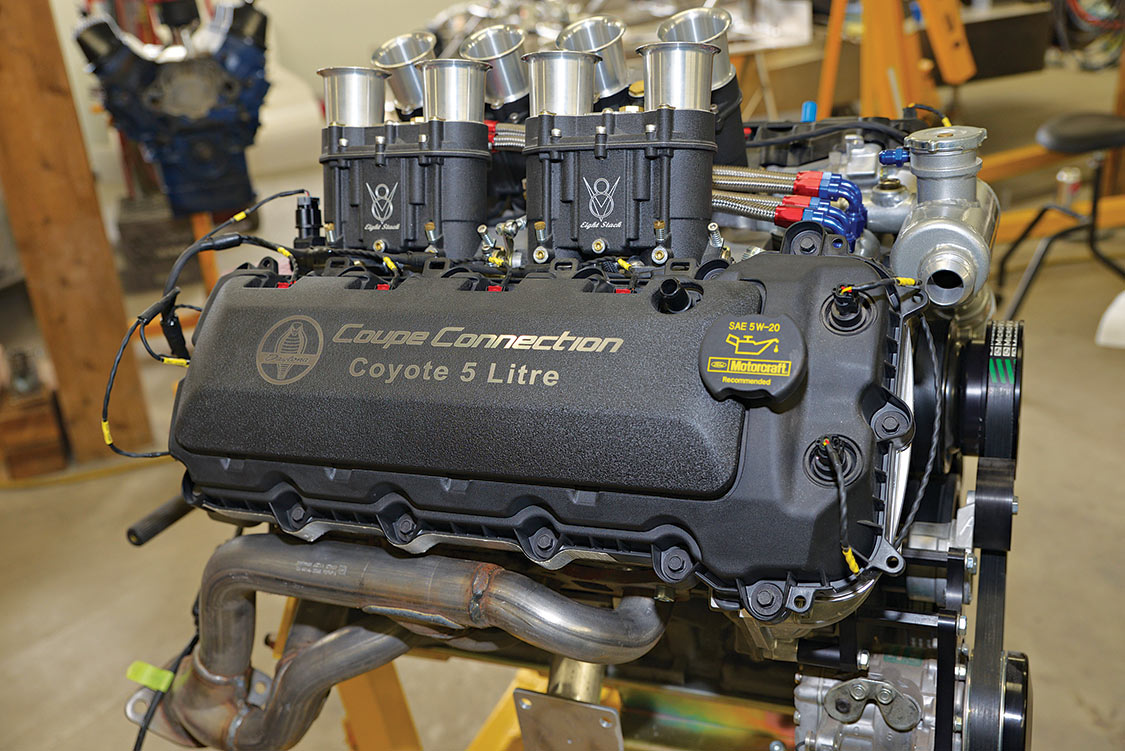
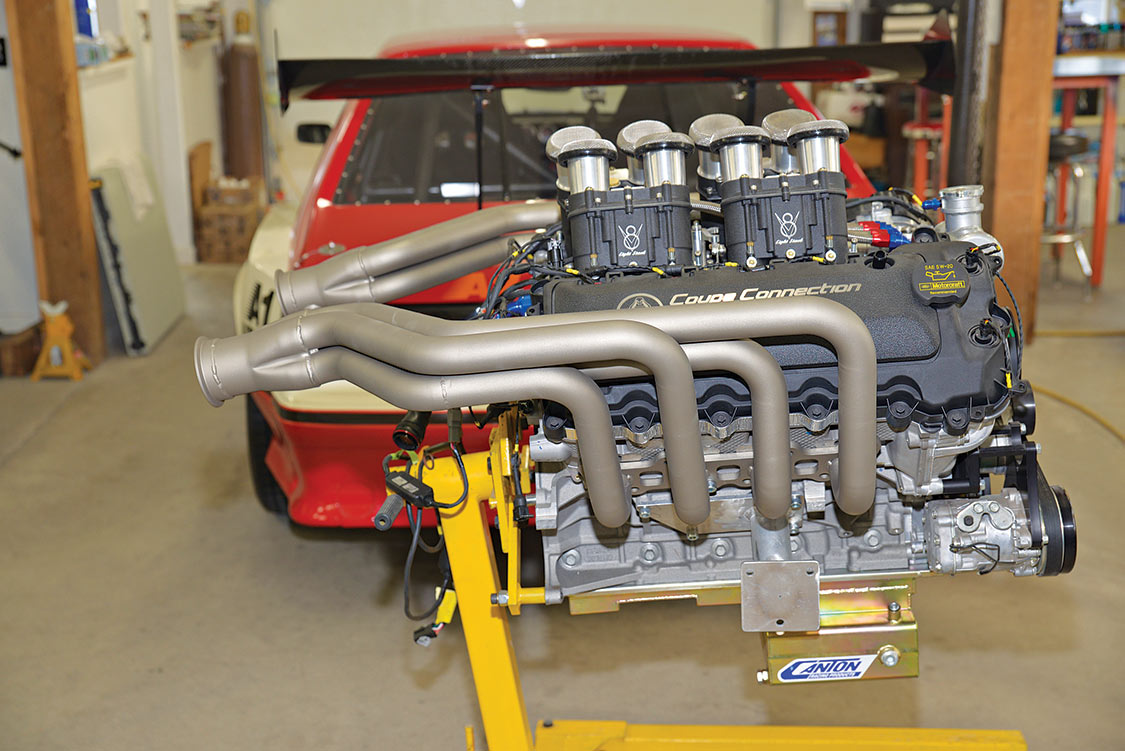
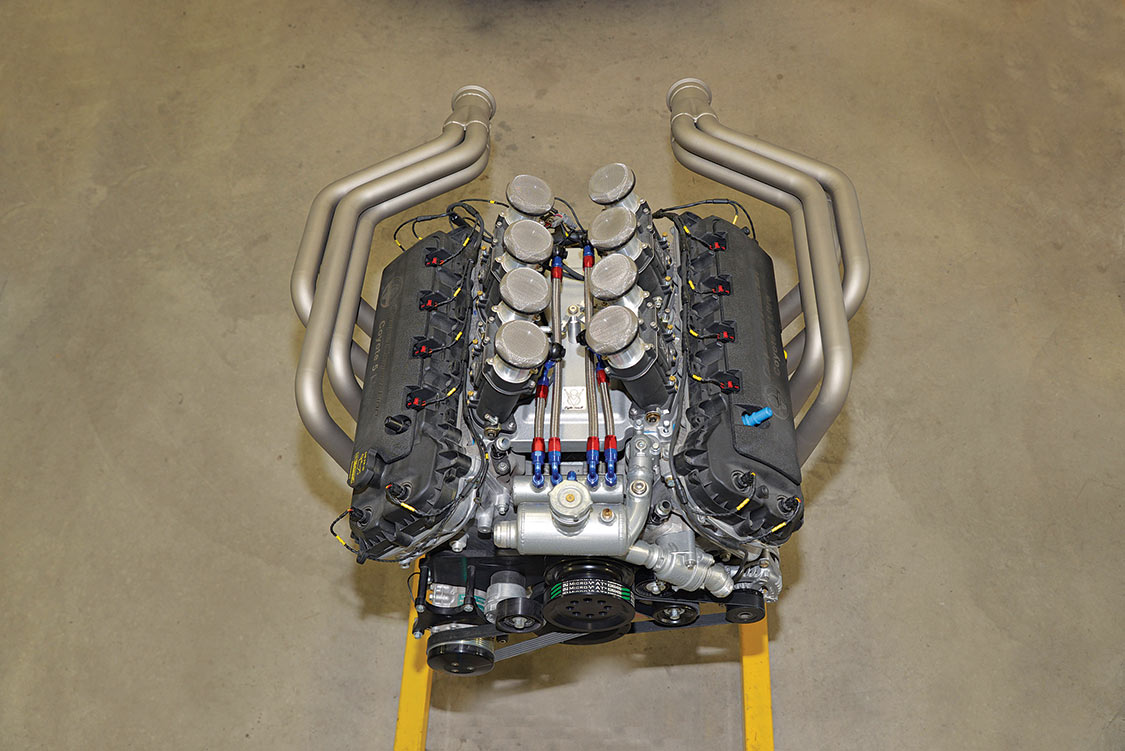
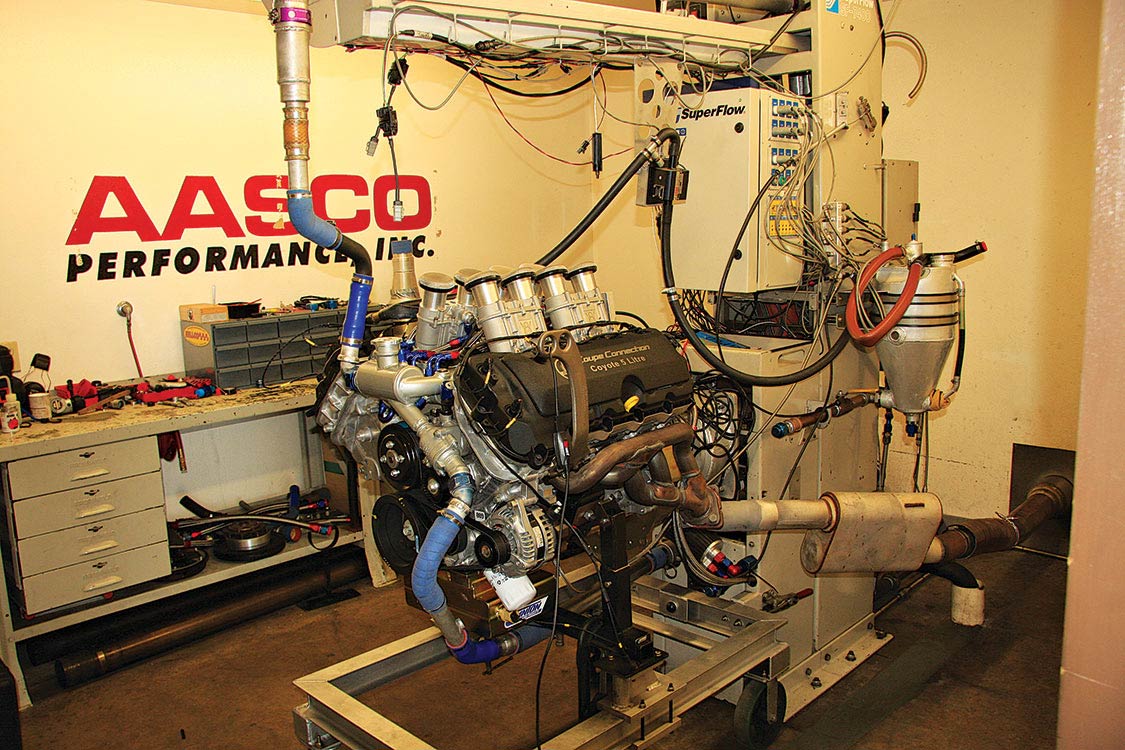
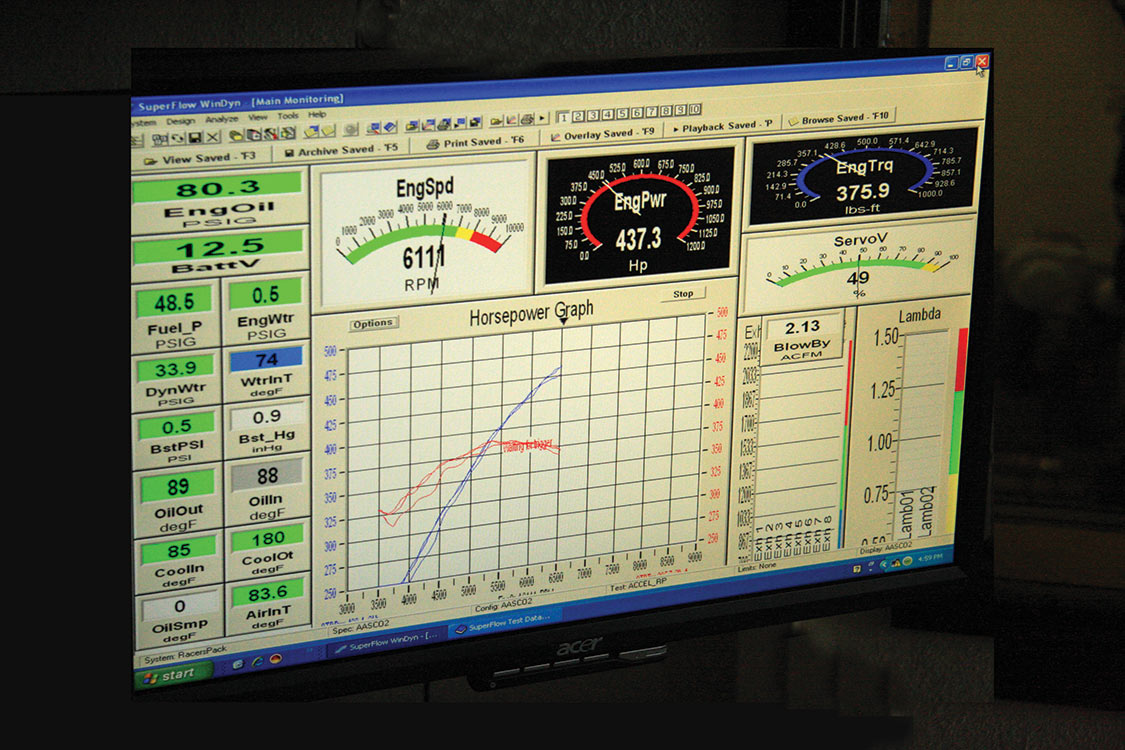
In 1964−1965, Peter Brock designed the Shelby Daytona Coupe to compete with Ferrari for the FIA World Manufactures Championship, which they won in 1965. There were six original cars built and all six still survive today. All six are collectors’ cars and carry a high value.
Several kit car builders have re-created the Daytona Coupe. Factory Five’s car is at the top of the list and some people buy them to build as dedicated race cars. Karen Salvaggio is one of those people. She has won two national championships with Factory Five roadsters. She and her now deceased husband bought this Daytona Coupe in 2004. She raced this car for seven years, and then the car was retired when she had a new one built. This car won two 25-hour races at Thunder Hill, California. The retired car has been sitting in a museum.
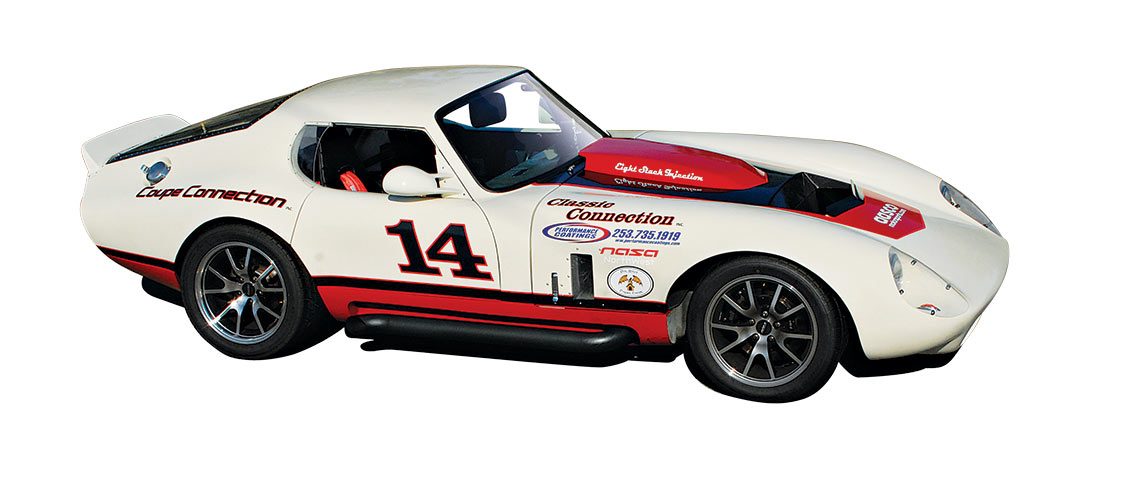
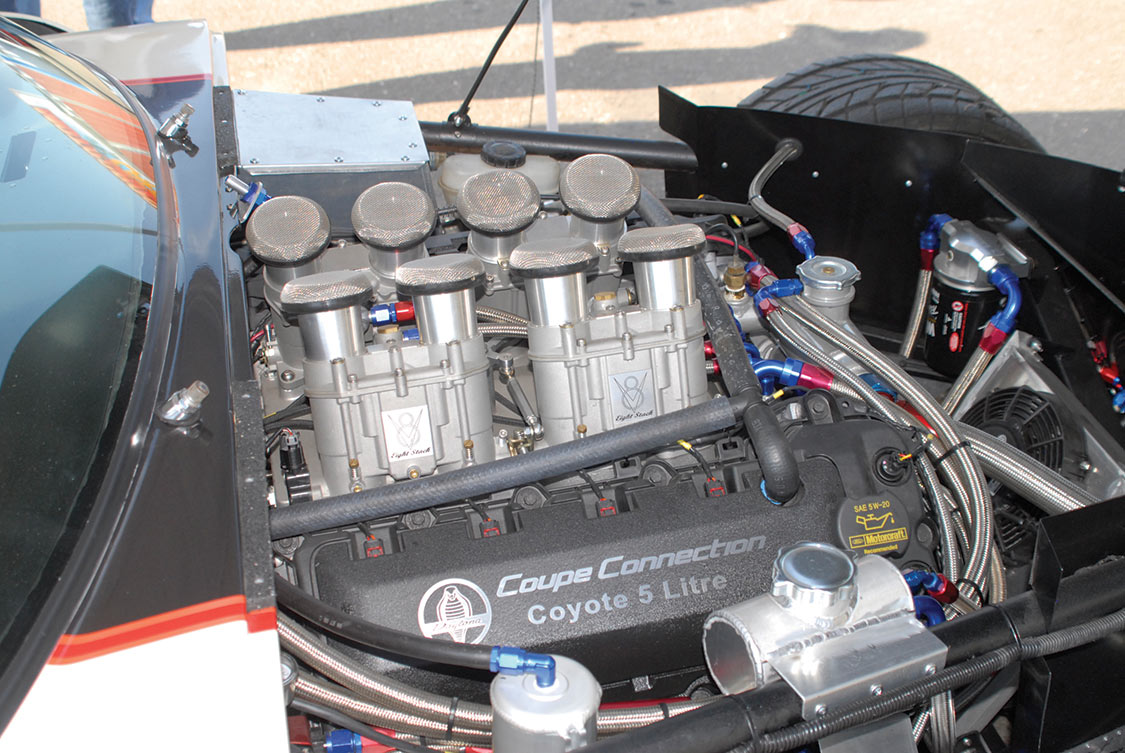
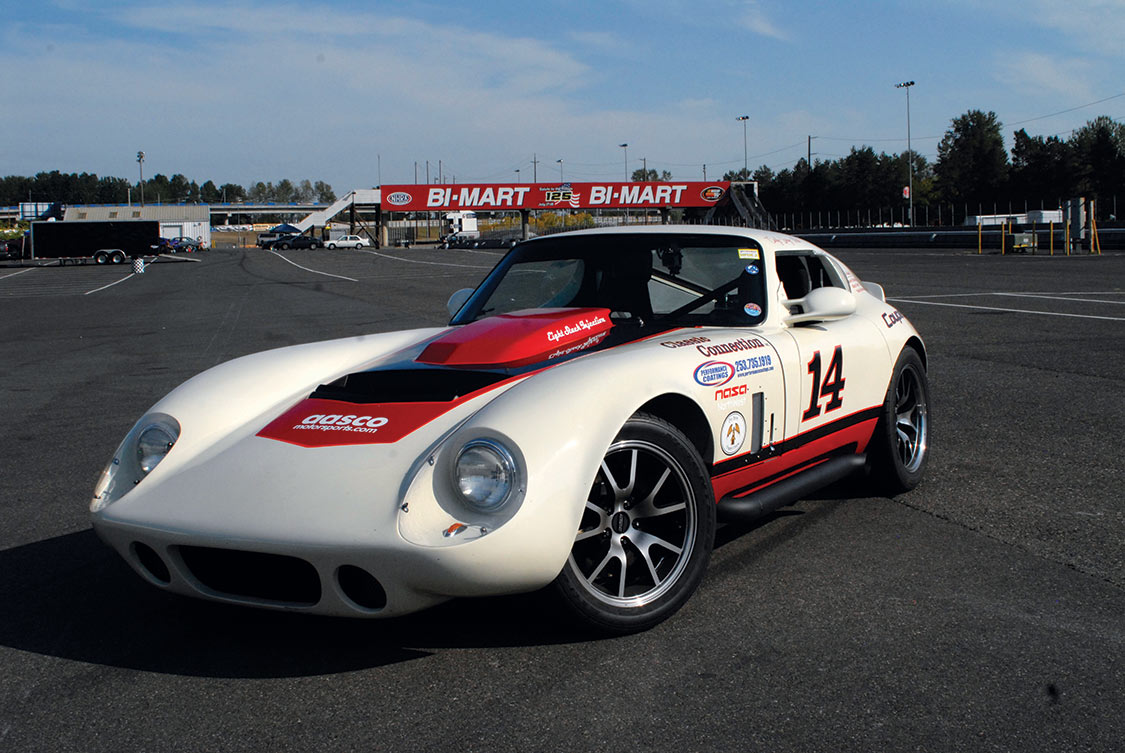
Now, as we mentioned, Merrell’s GT40s were not ready and he needed a race car for a test bed for the new engine and 8-Stack combination. So he called Salvaggio and ultimately bought the old race car. Former Shelby driver, Alan Grant, towed the car up to Merrell’s shop in Sequim, Washington.
Of course, the Coupe needed to be completely dismantled. All new parts needed to be ordered or fabricated, and the car needed to be extensively modified to accept the new Coyote engine. Coupe Connection has a full machine shop, which made it a lot easier to do fabrication and machining in-house, and not have to farm it out.
Merrell, along with Larry Reece and Duane Babinski did all the work on the Coupe, with the exception of the ceramic coating on the headers and side pipes. Working non-stop, the crew of three were able to have the car ready for the track in just a few months. The new paint scheme was designed and applied by Merrell to promote Coupe Connection, and to stand out from the other Daytona Coupes that are painted with the Shelby Identity.
Hand-lettered, just above the left-hand door, are the names of the three drivers: “Curly, Larry and Moe.”
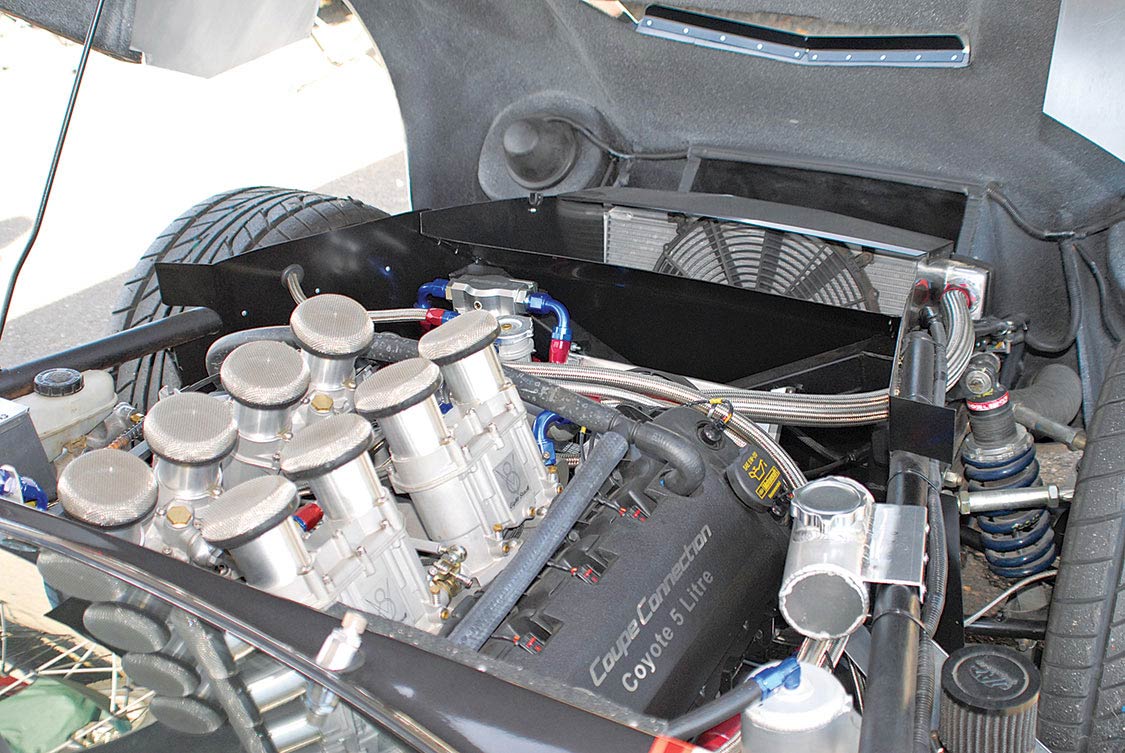
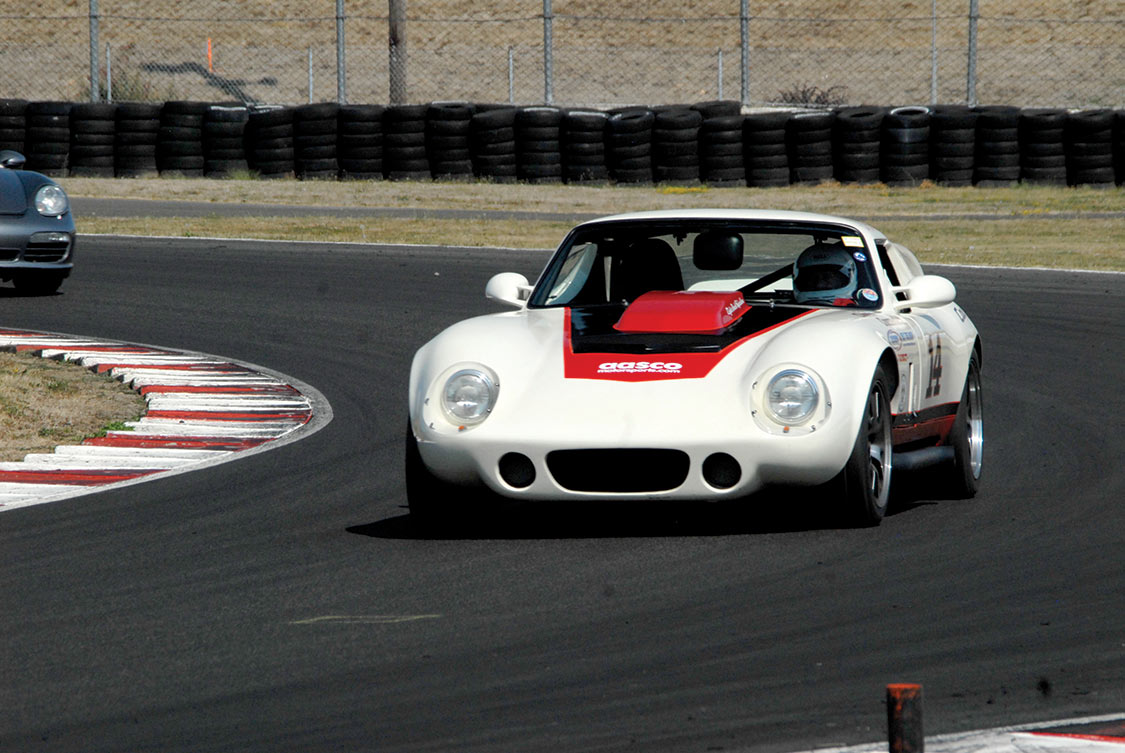
The wheels are 17-in. with 9.5-in. in the front and 10.5-in. in the rear. Tires are Nitto 555 and the sizes are 275/R-17 in the front and 315/R-17 in the rear. The wheels are an aftermarket copy of the Ford Mustang FR 500 that came from American Muscle.
The instruments are all Stewart Warner analog. The transmission is a Tremic T-600 5-speed bolted up to the Ford Coyote engine, with independent rear suspension with 2:73 gears. The car has a stock Ford Mustang rack with power steering, a KRC variable pressure pump and a cooler.
There was a tremendous amount of modification to this car to make everything fit, so it really wound up being a one-off by the time the car was ready to go to the track.
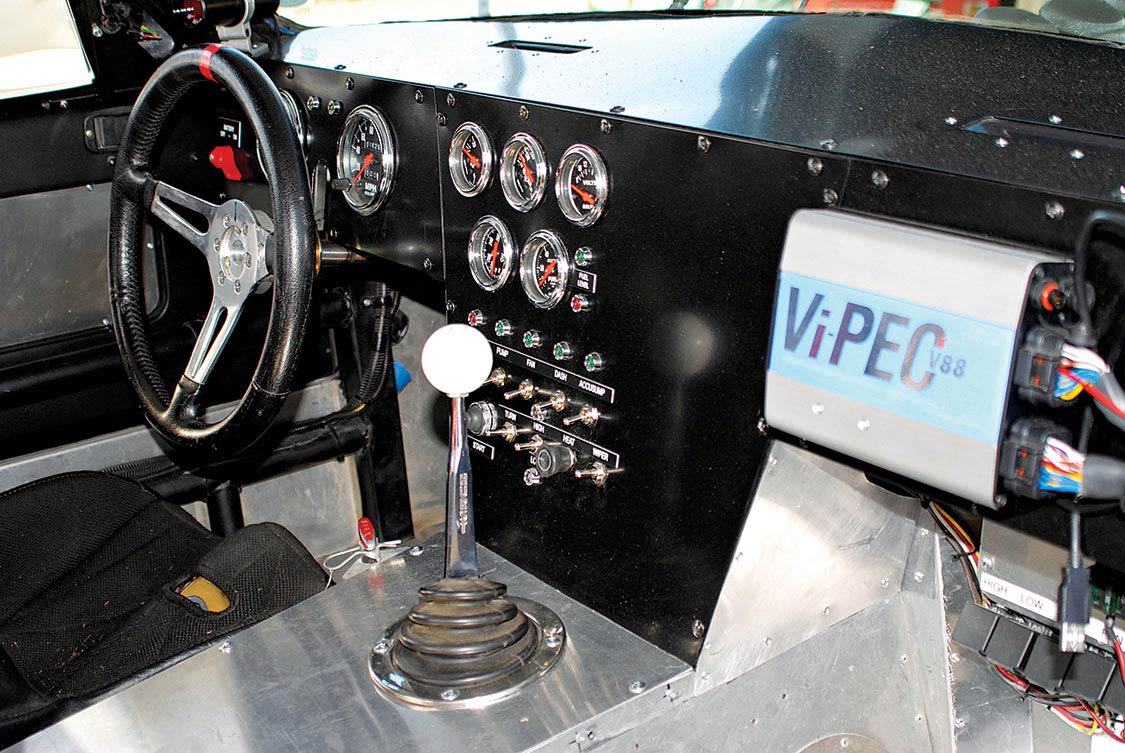
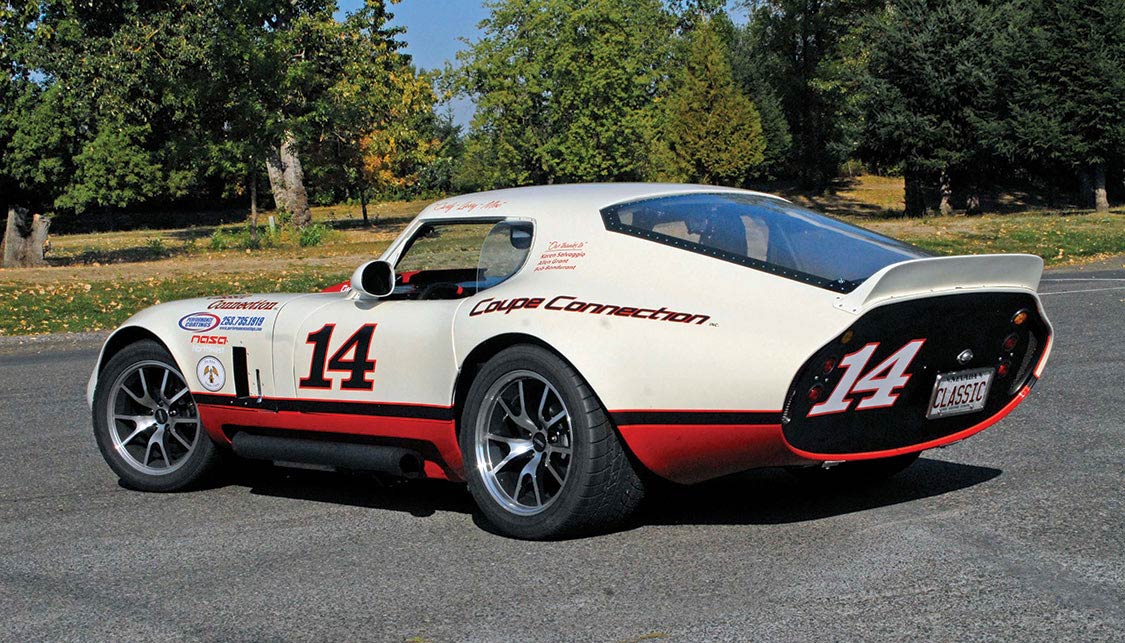
“This allows me to change the pressure in the rack to either increase or decrease the speed of the steering and also the feel in the steering wheel,” Merrell says.
There was a tremendous amount of modification to this car to make everything fit, so it really wound up being a one-off by the time the car was ready to go to the track.
Coupe Connection
145 Bravo Rd.
Port Angeles, WA 98362
(360) 461-7248
www.coupeconnection.com
Borla California
701 Arcturus Ave.
Oxnard, CA 93033
(877) 462-6752
www.borla.com
Factory Five Racing
9 Tow Road
Wareham, MA 02571
(508) 291-3443
www.factoryfive.com
Ford Racing engines are available through any of the large parts houses or your local Ford store.